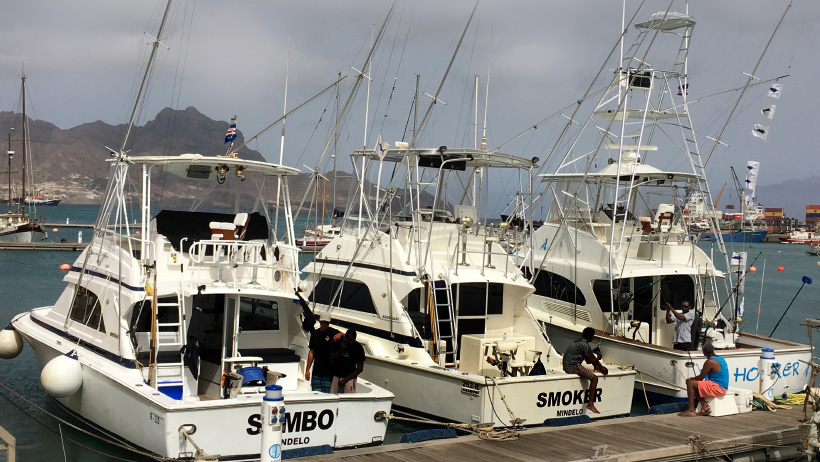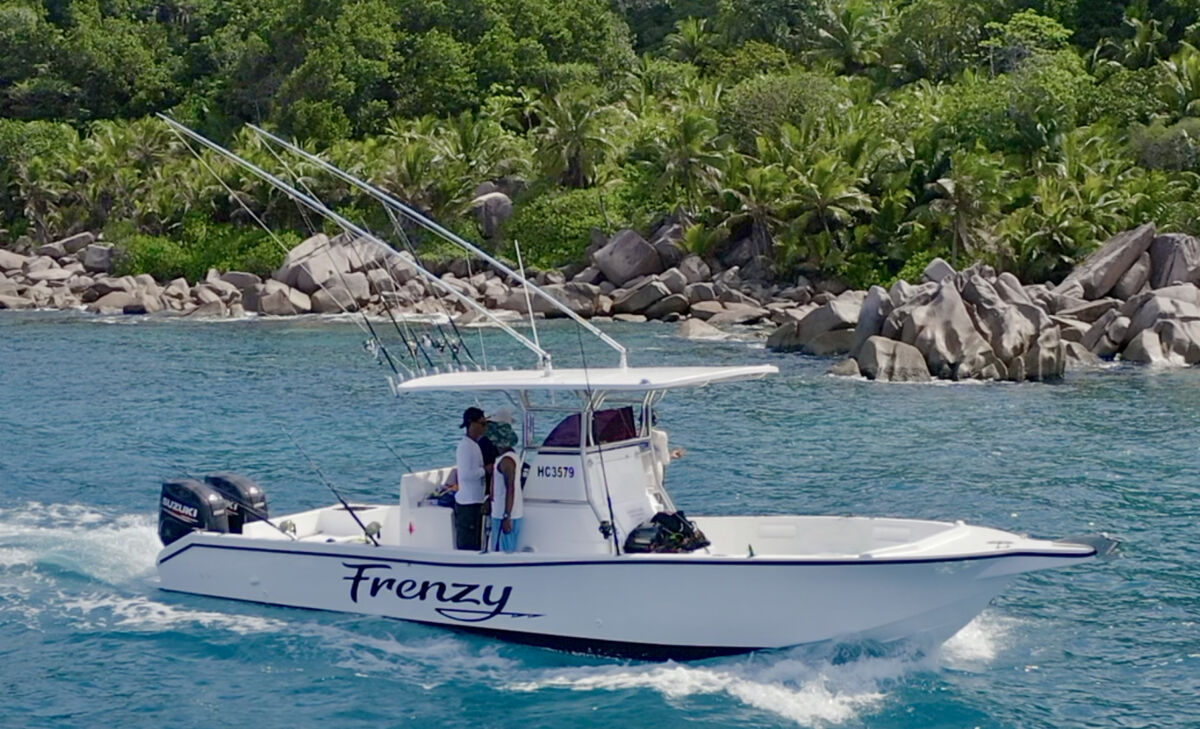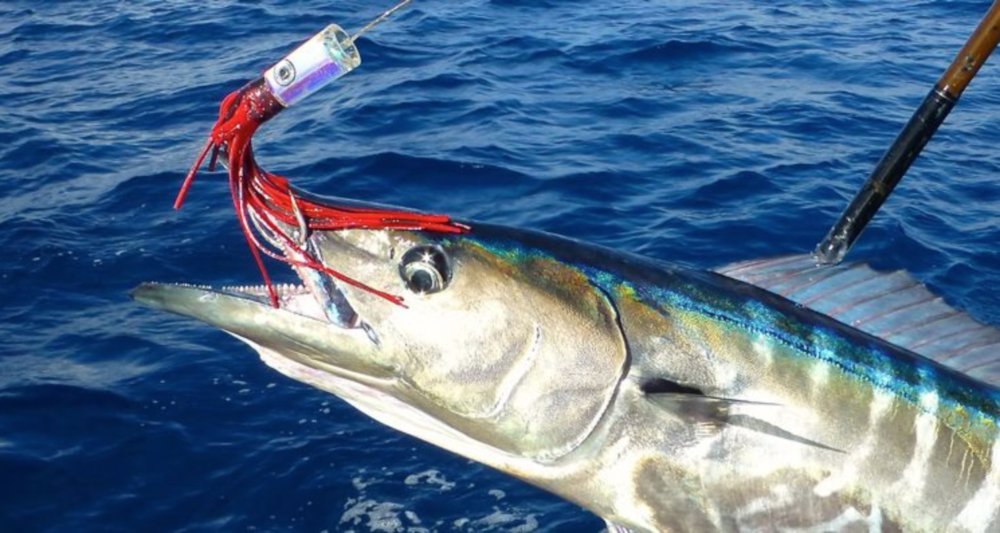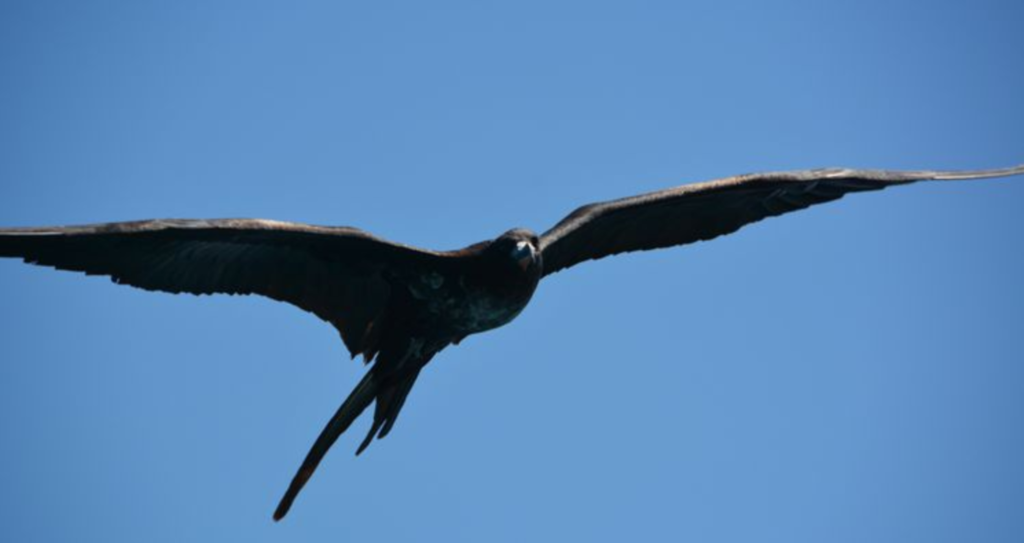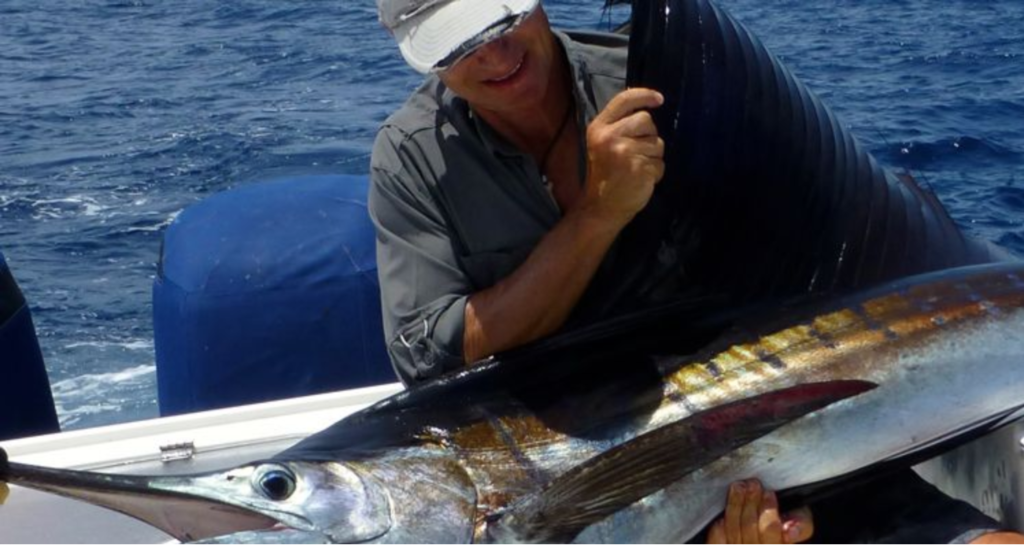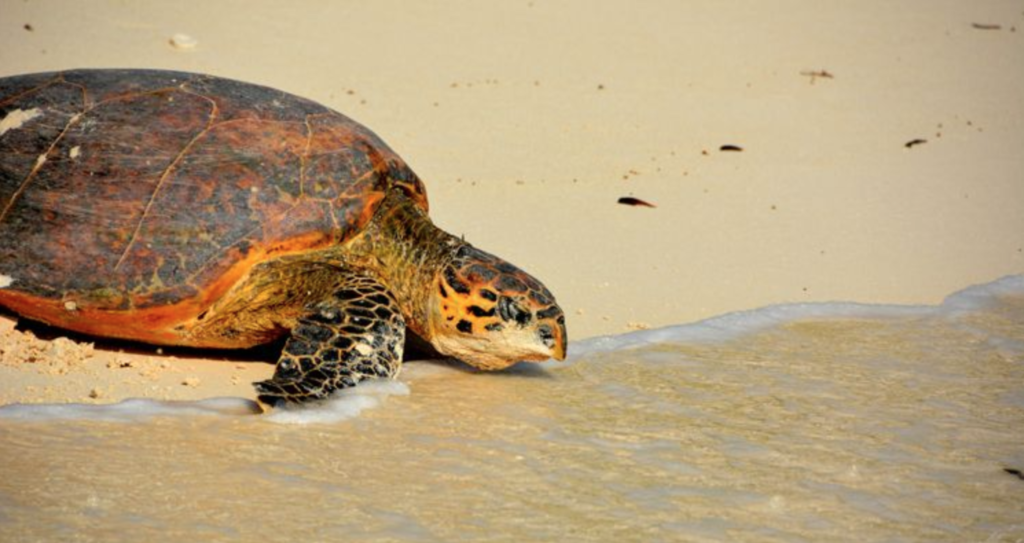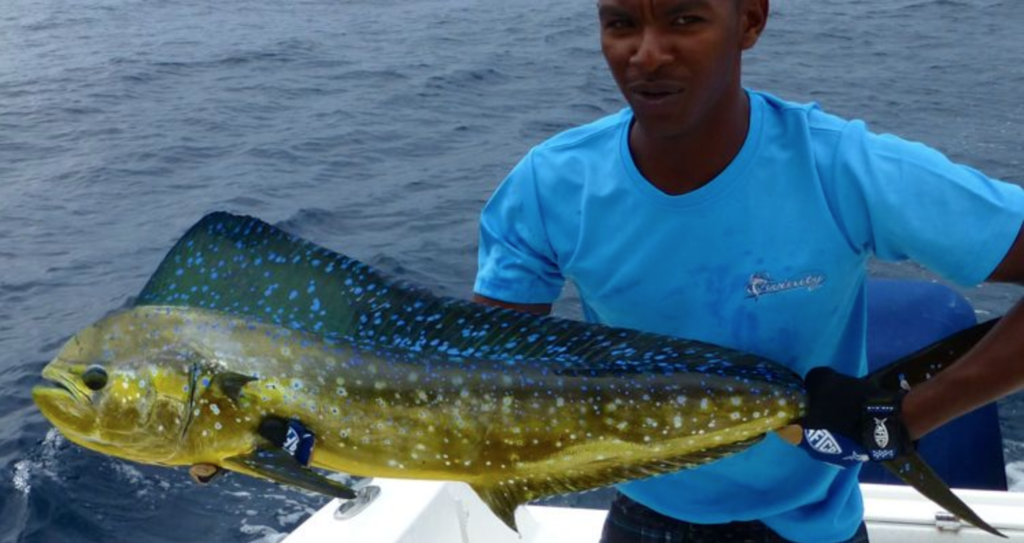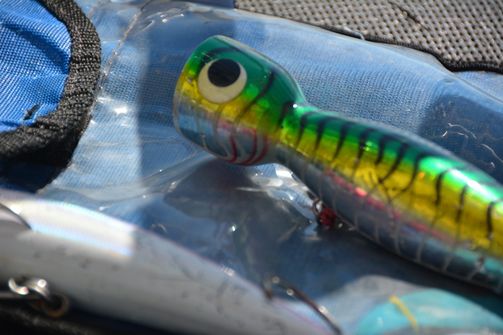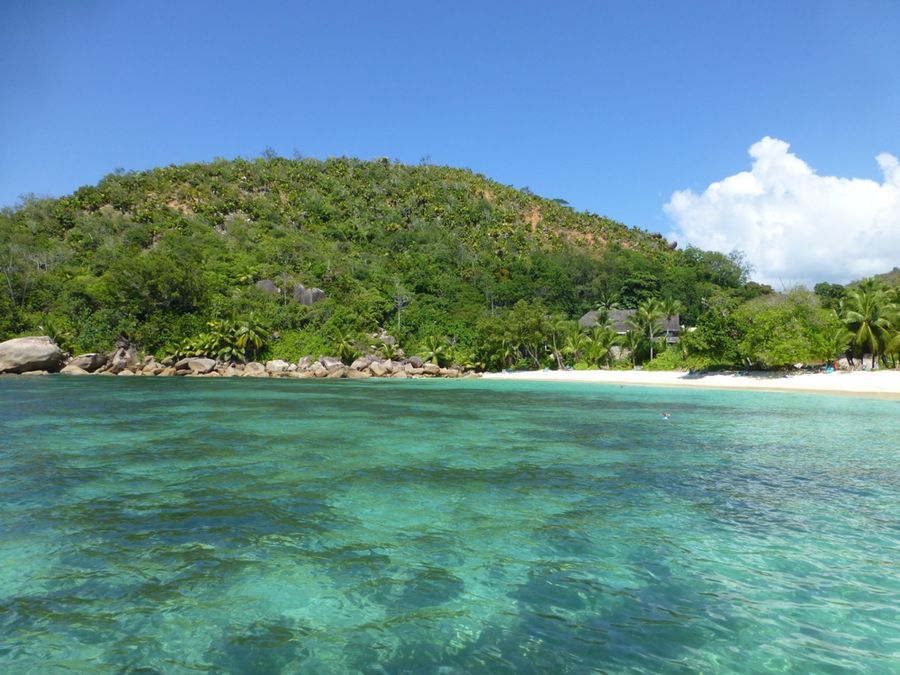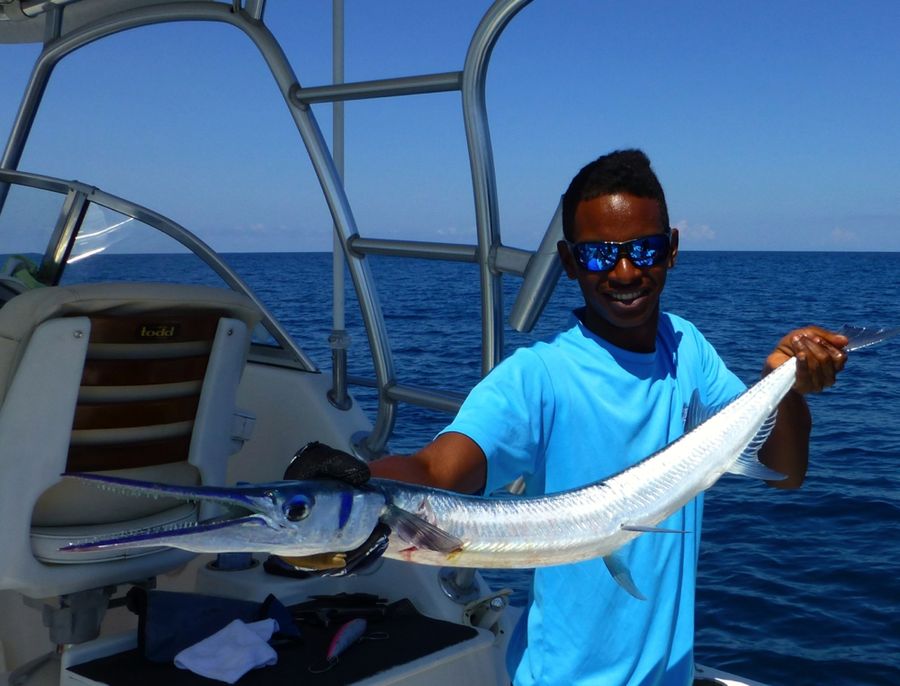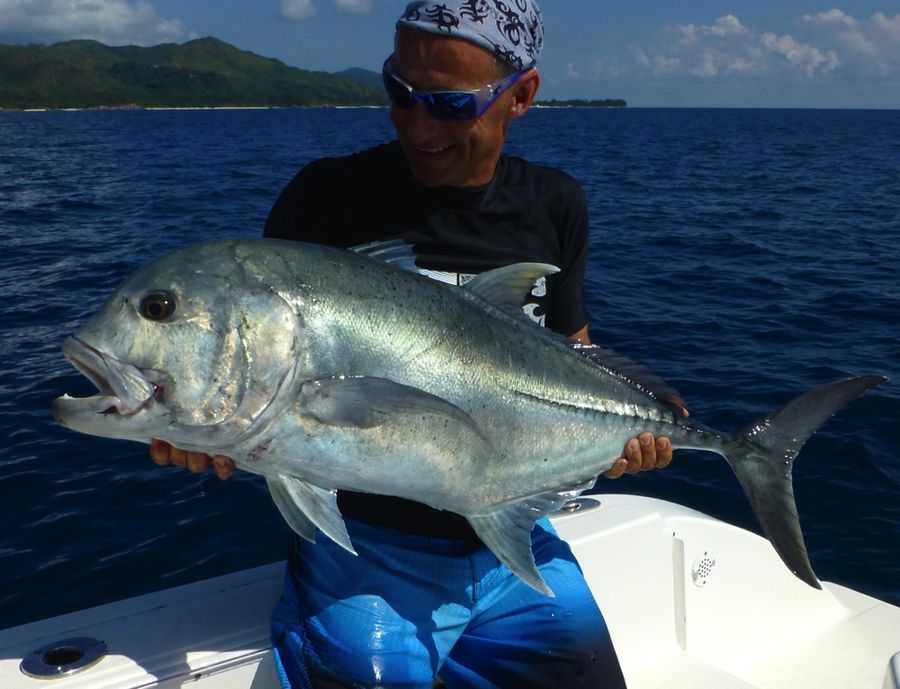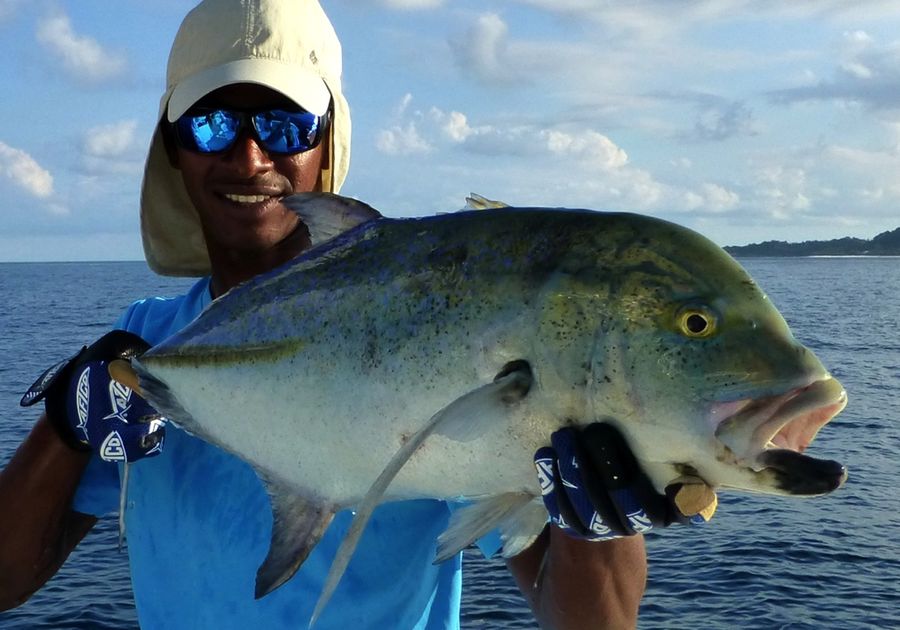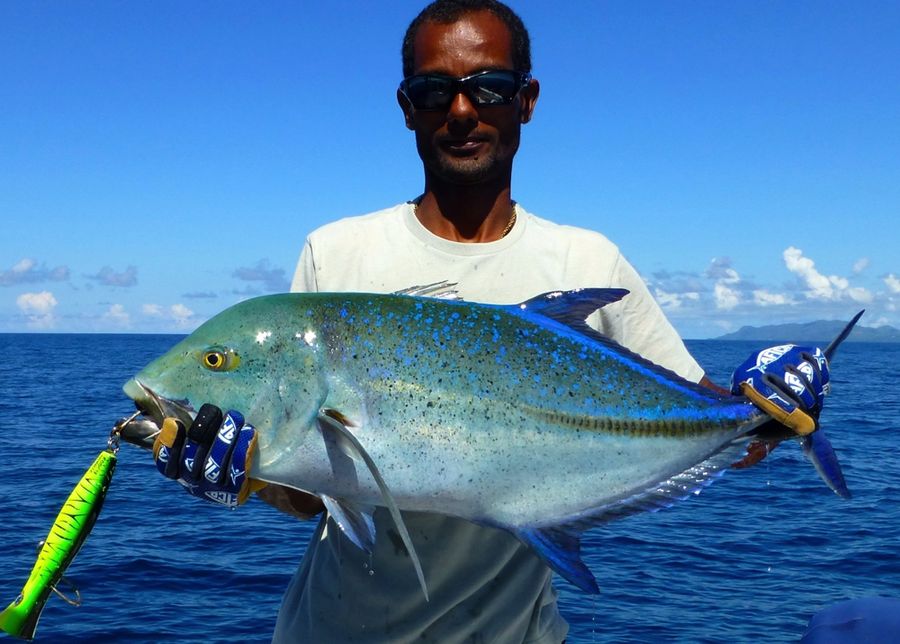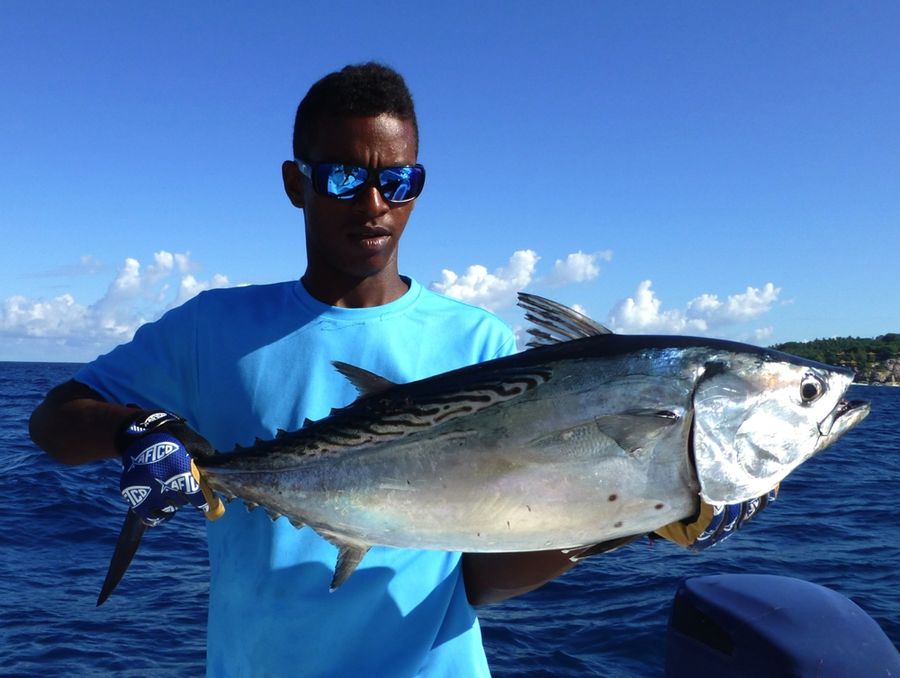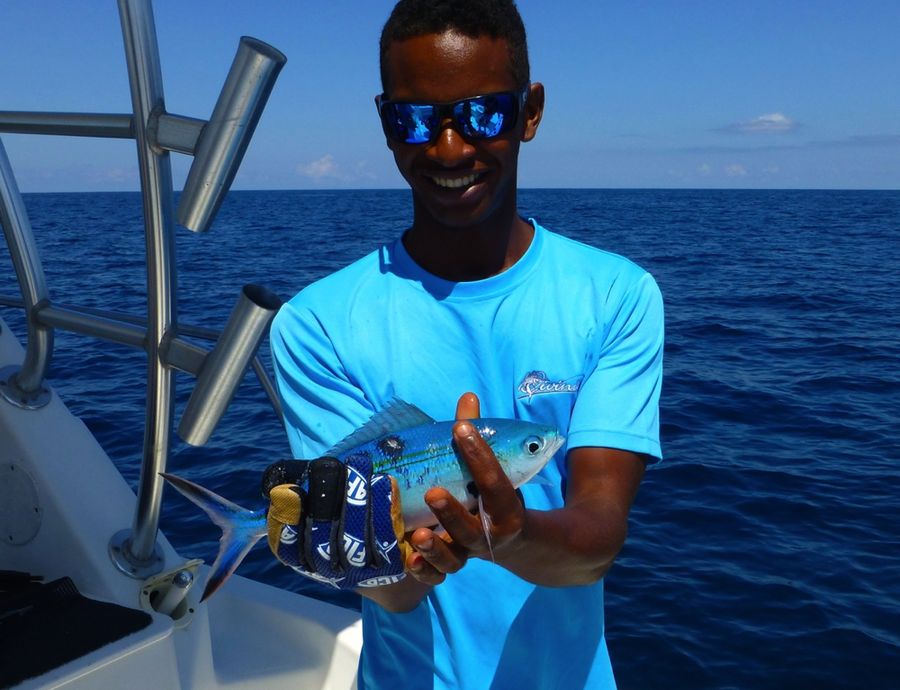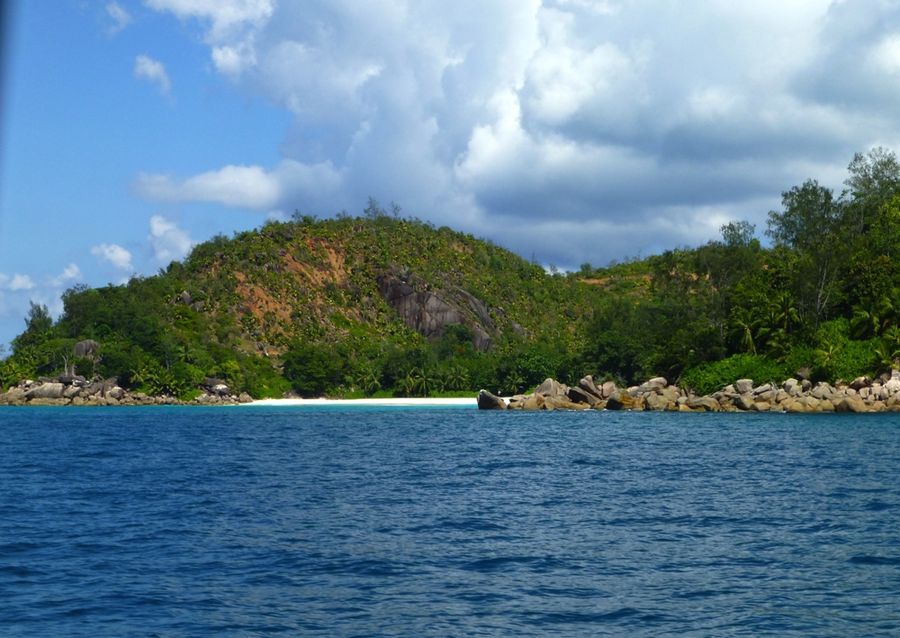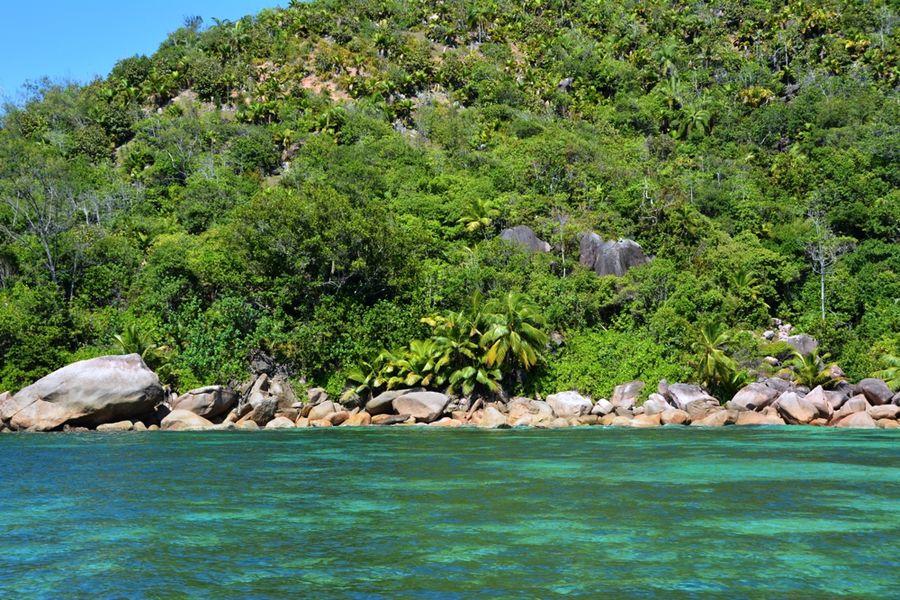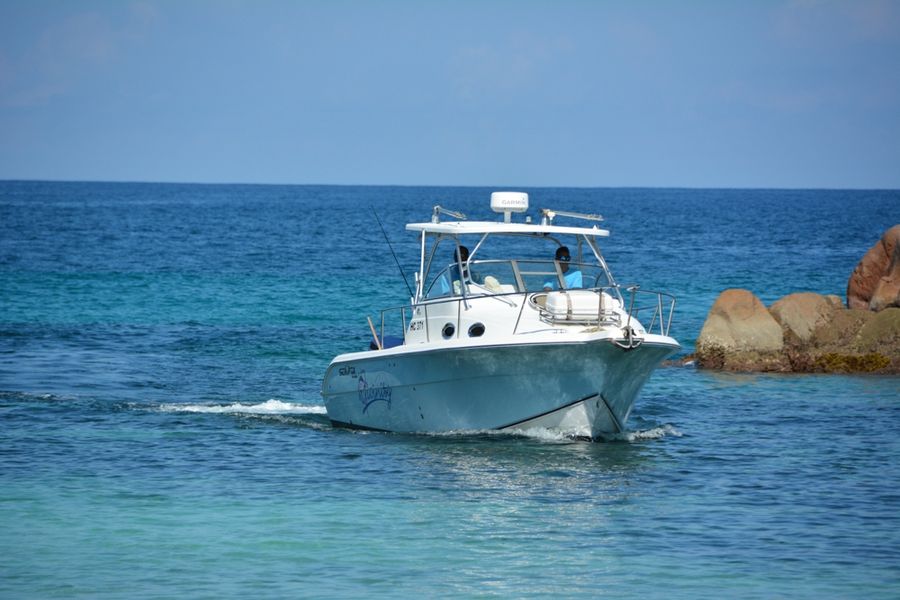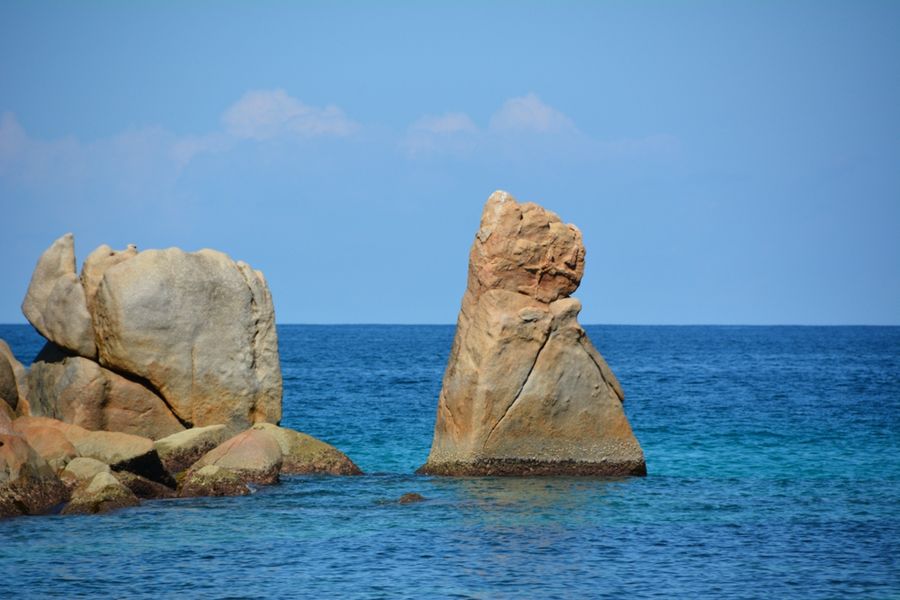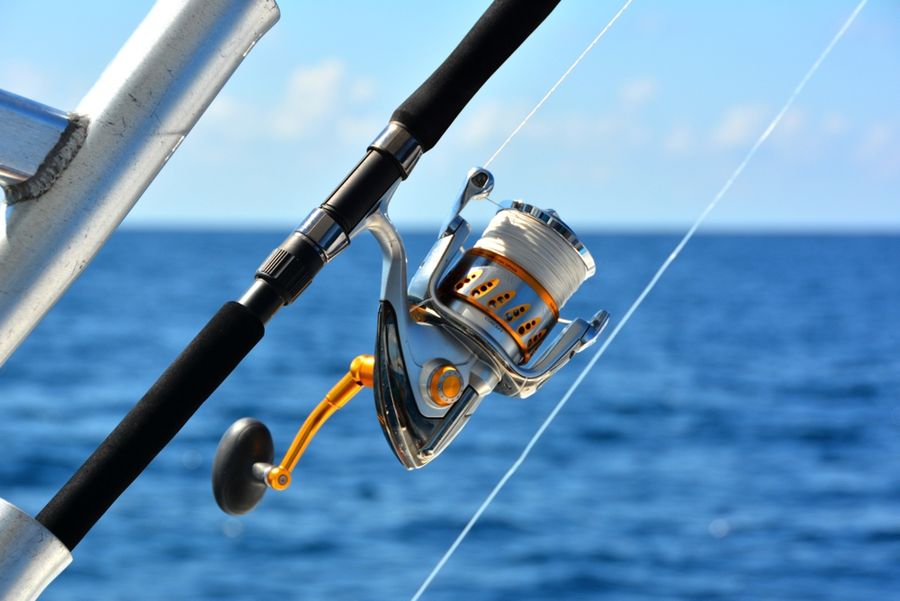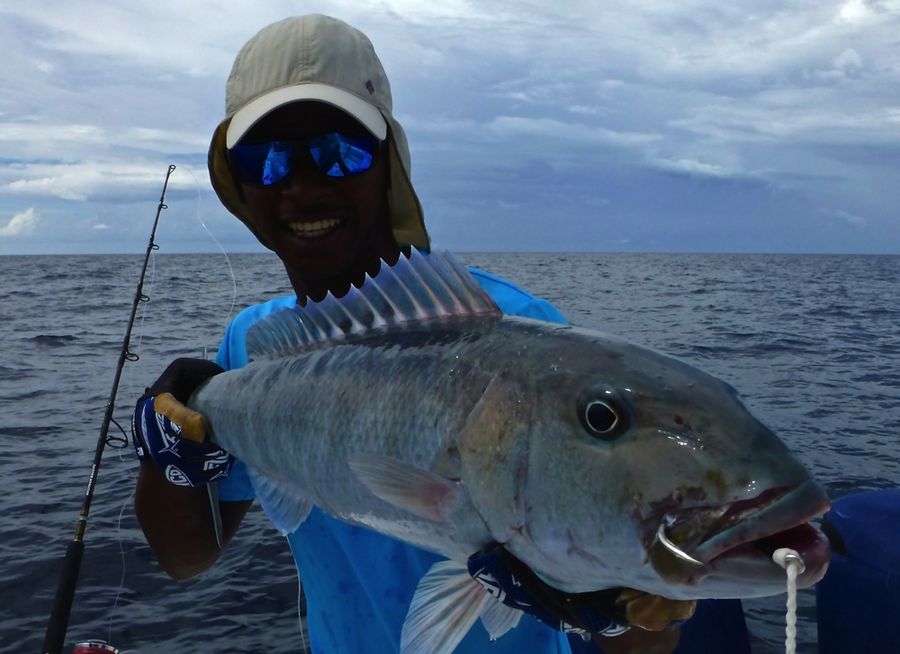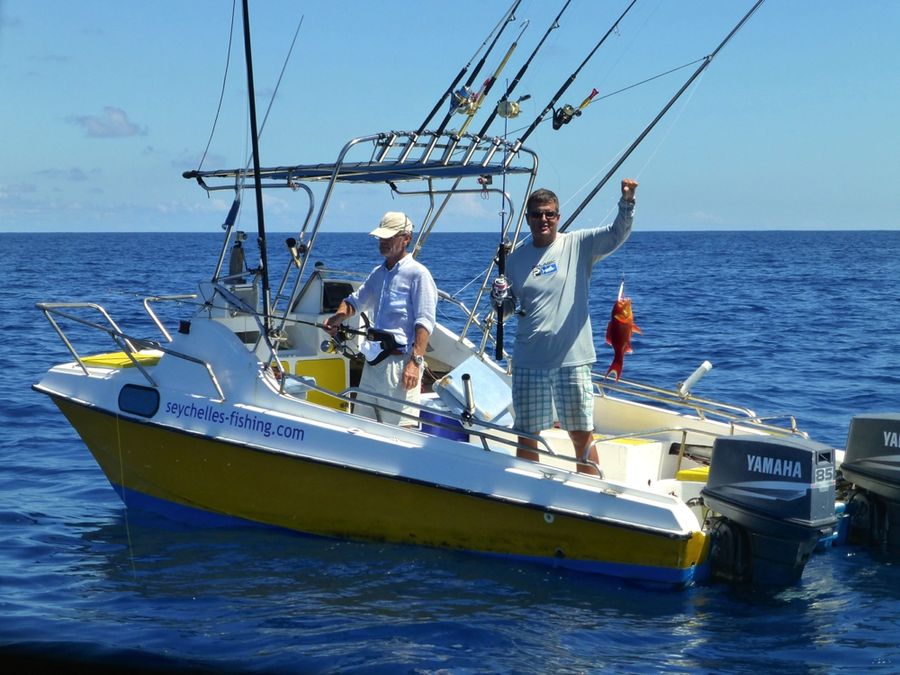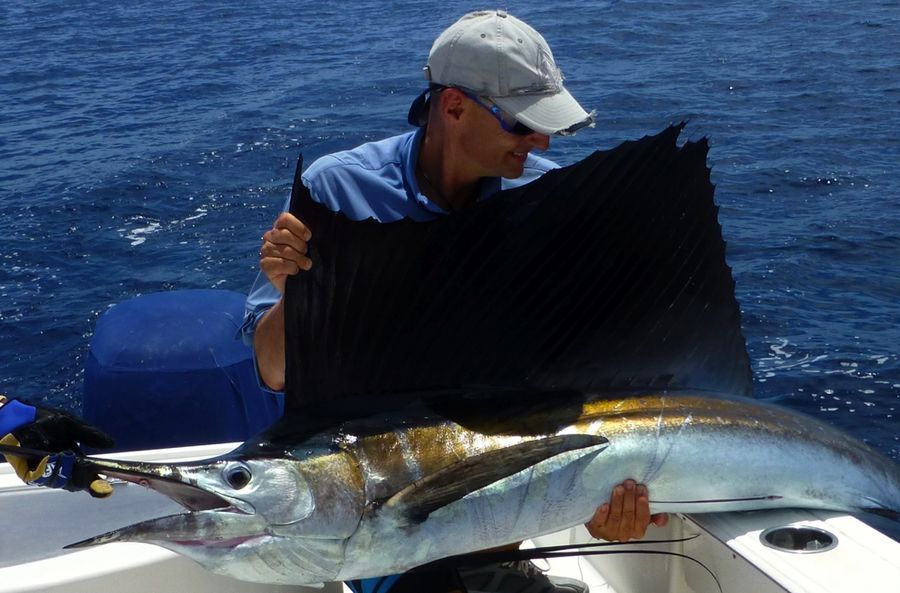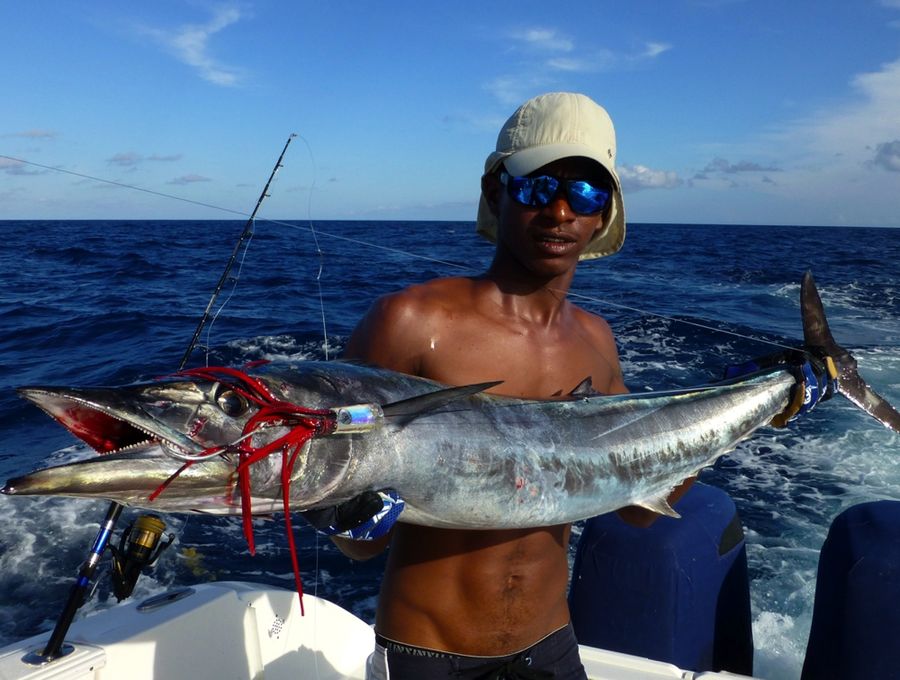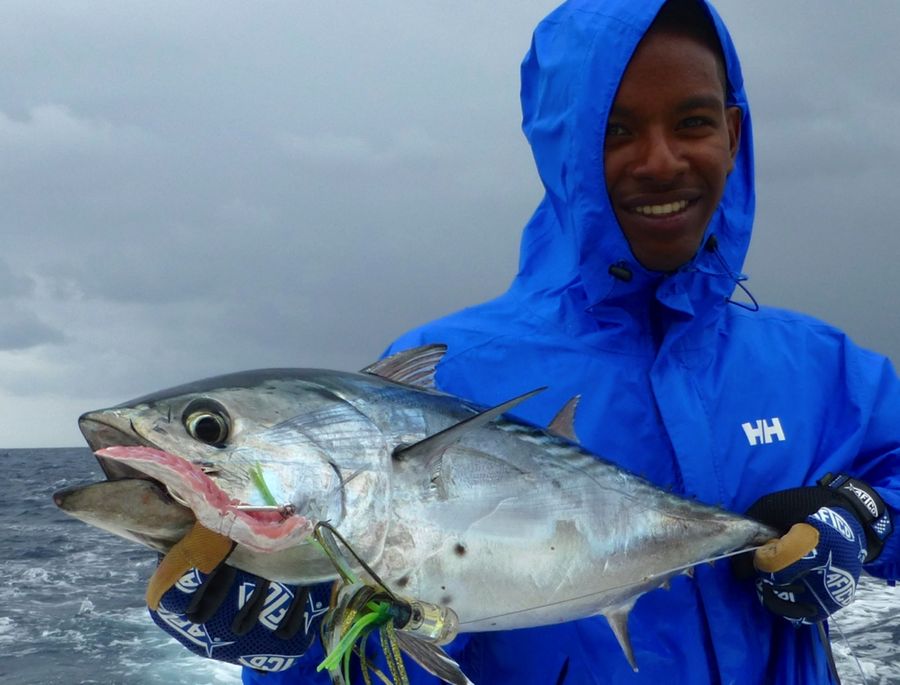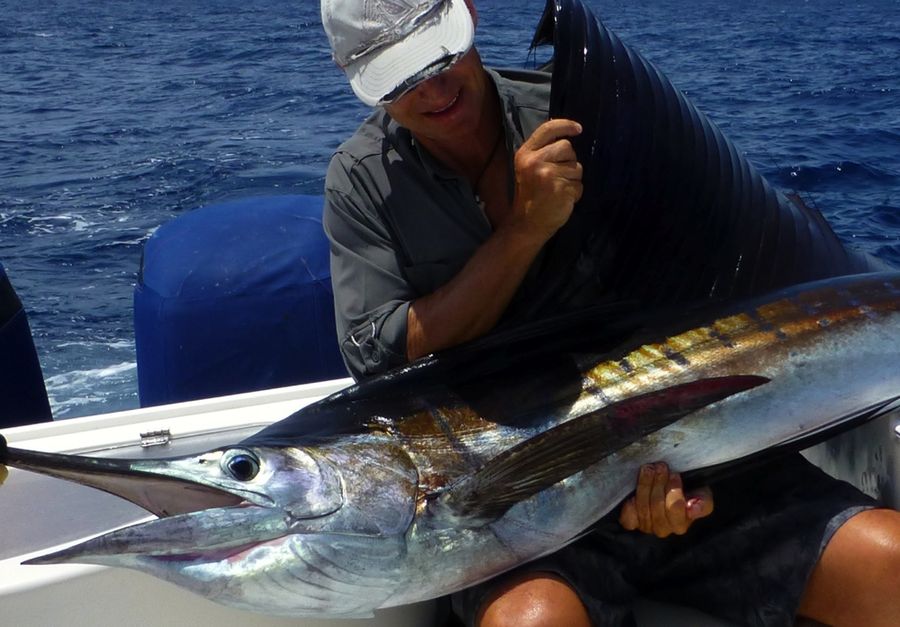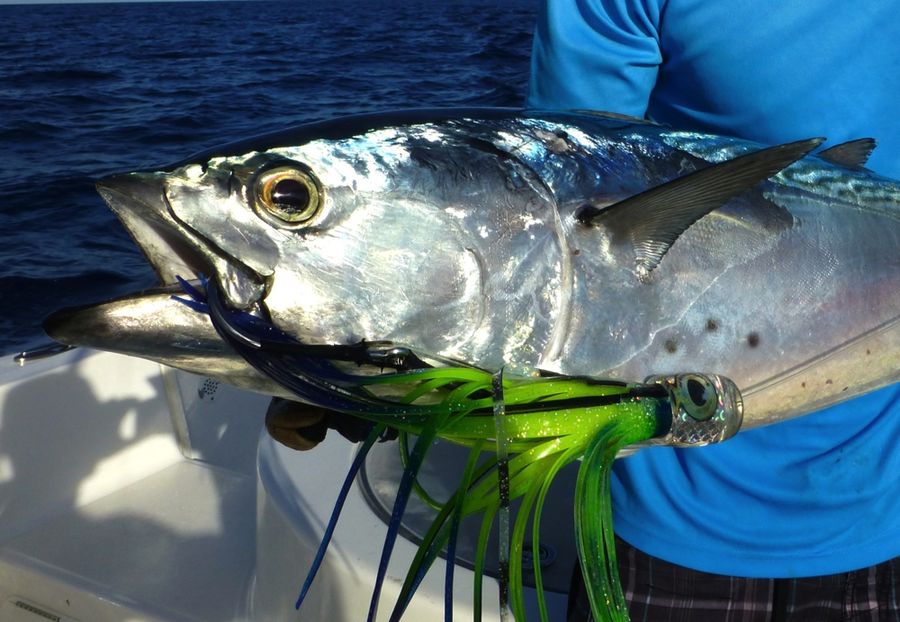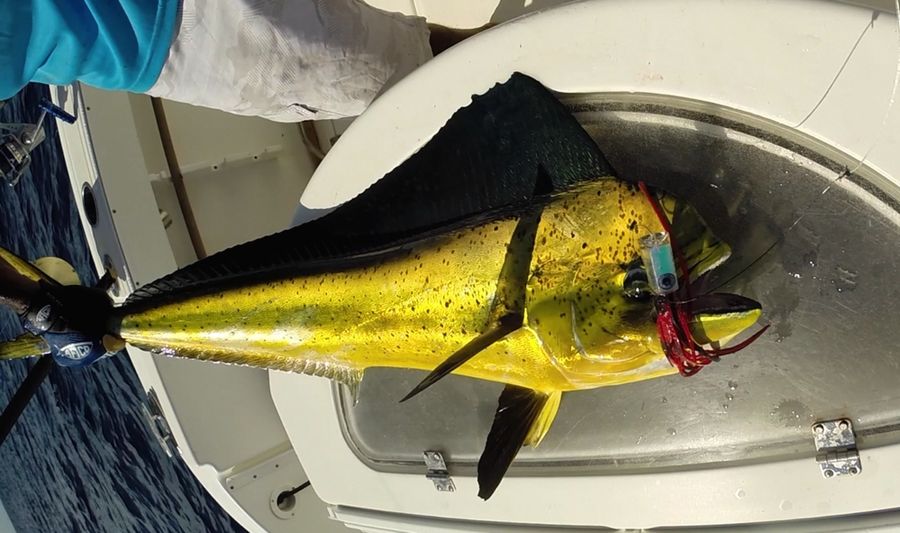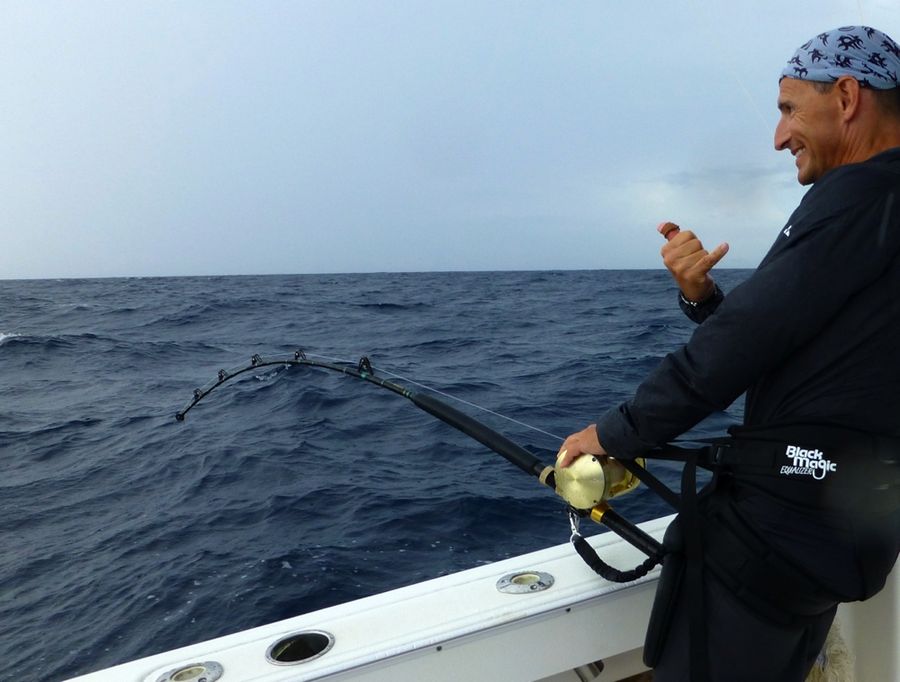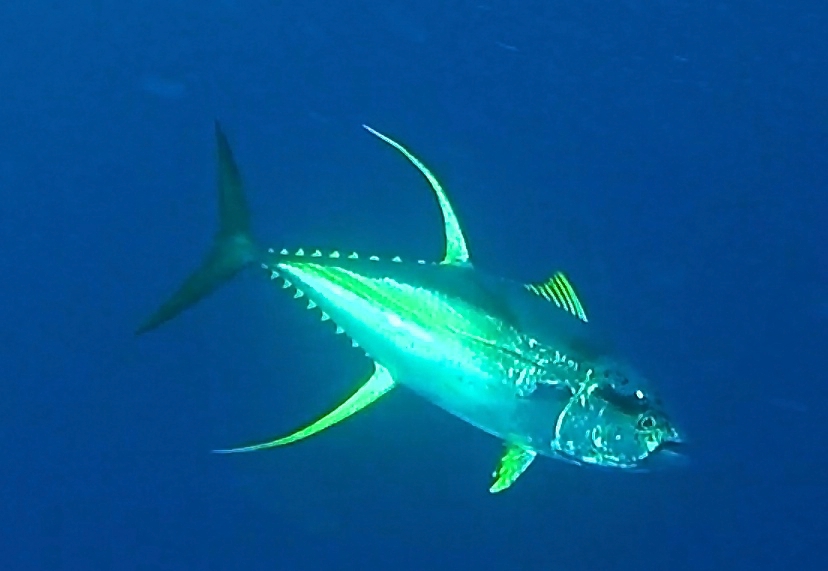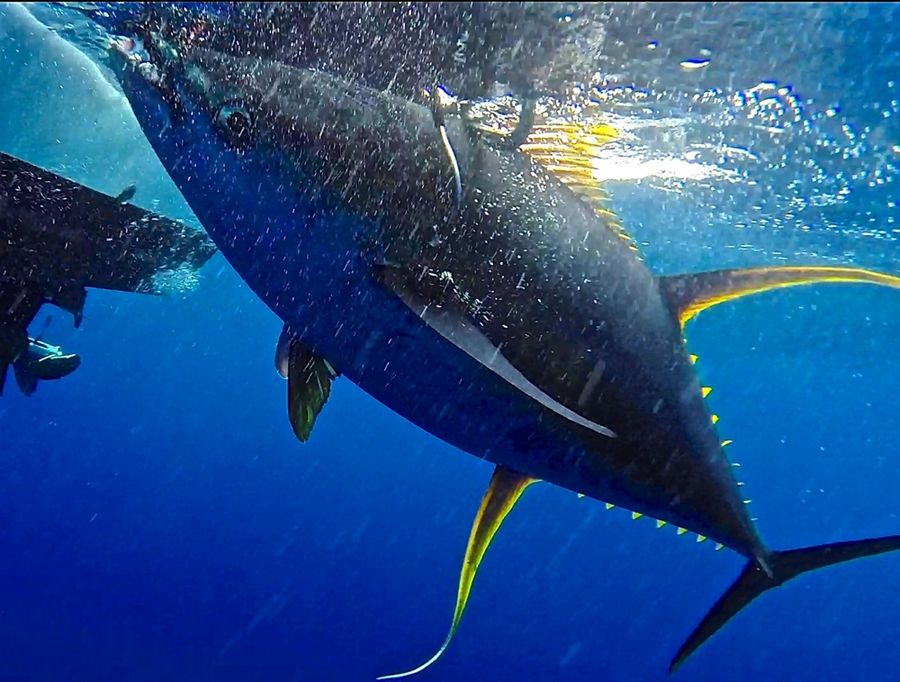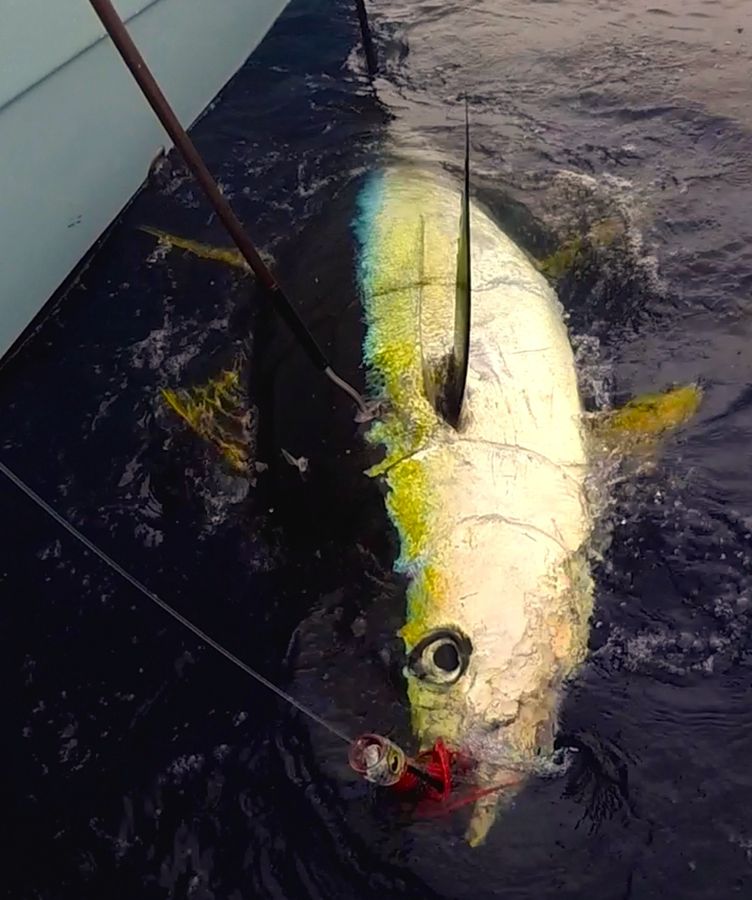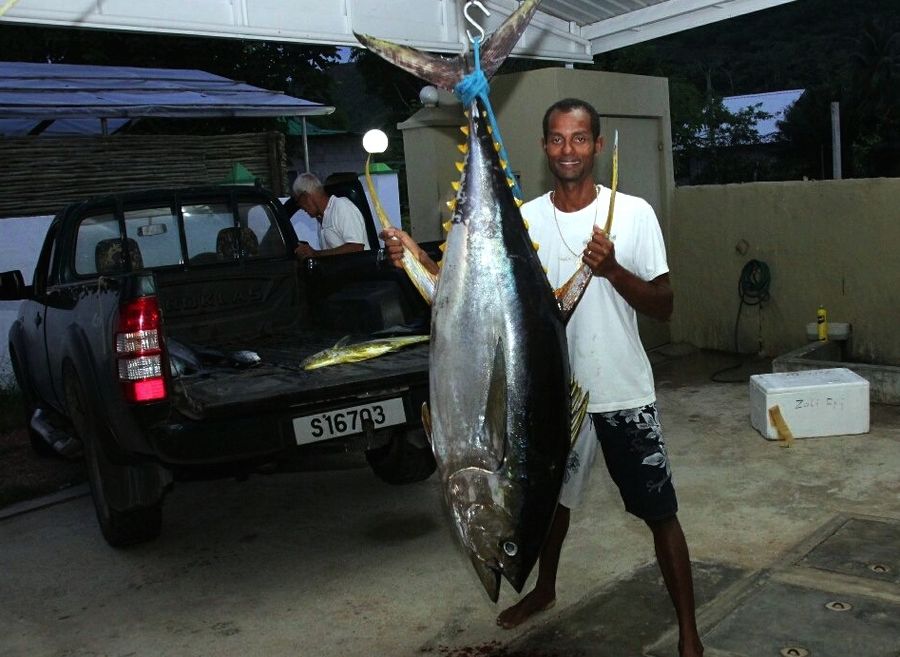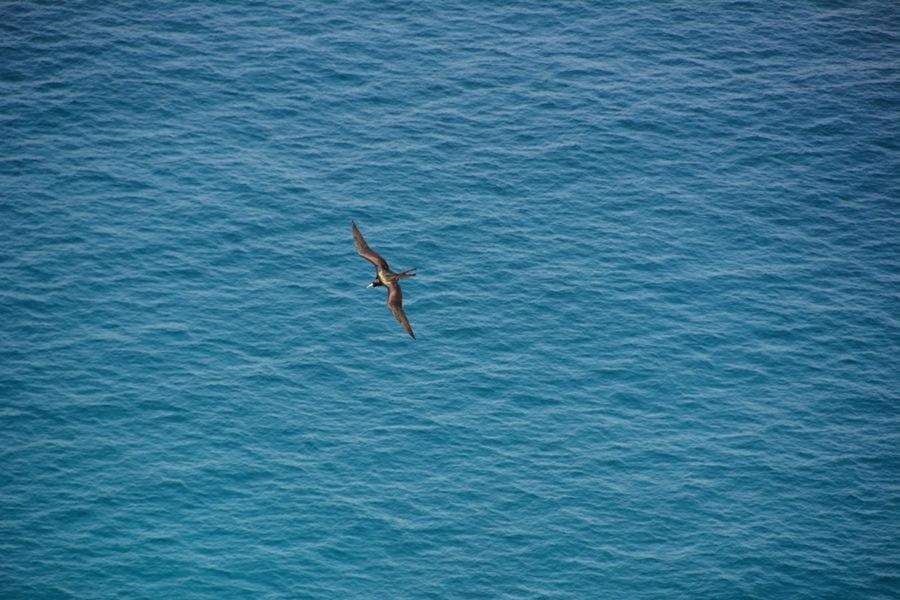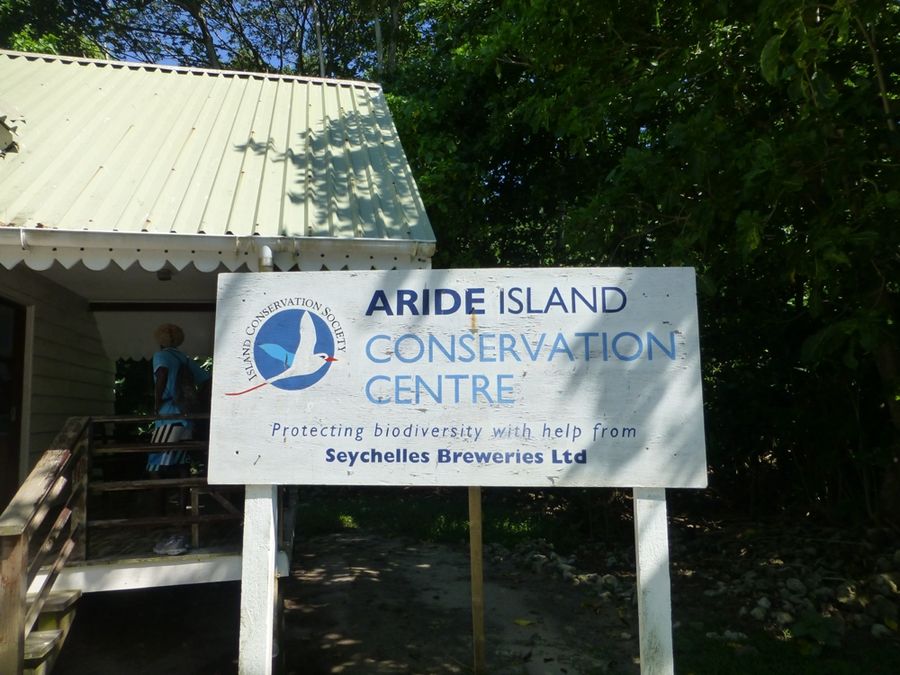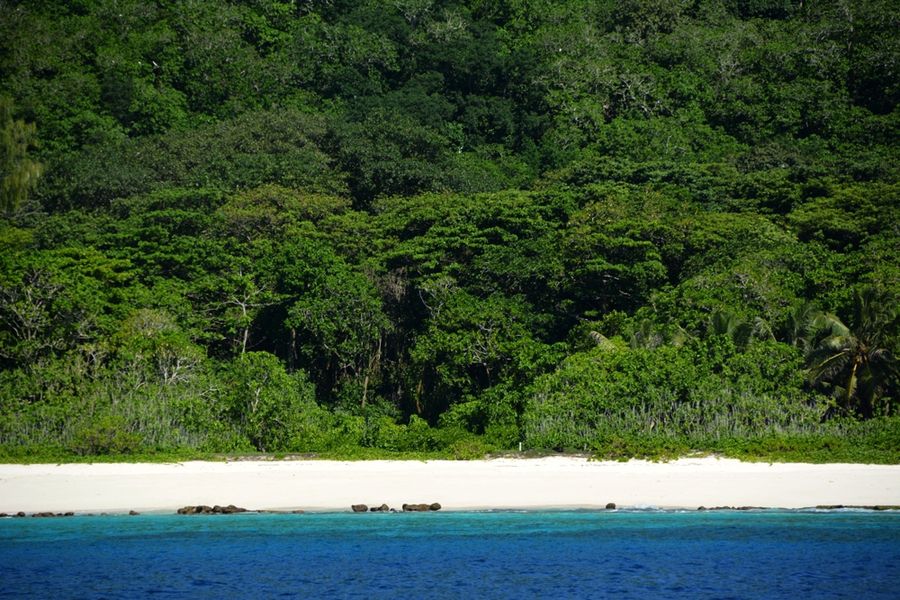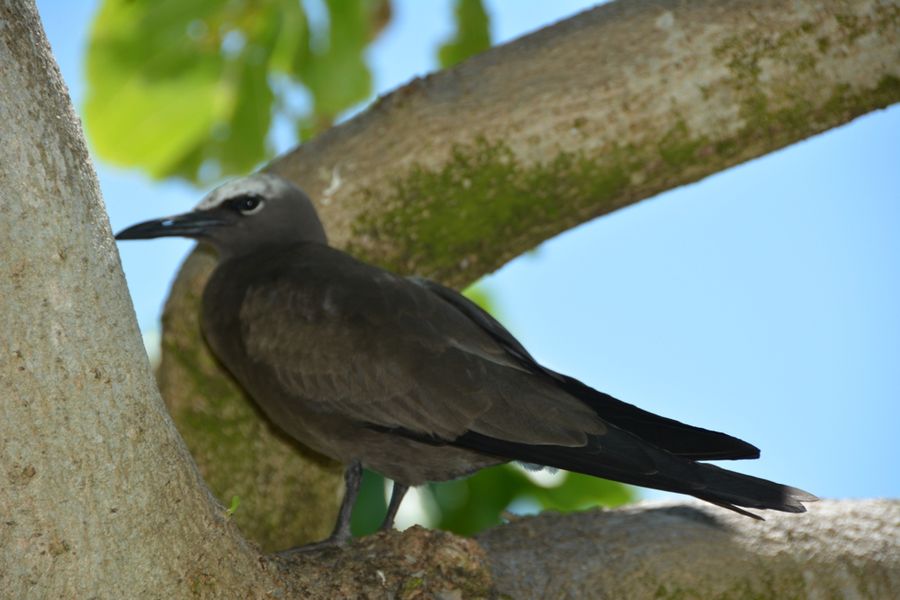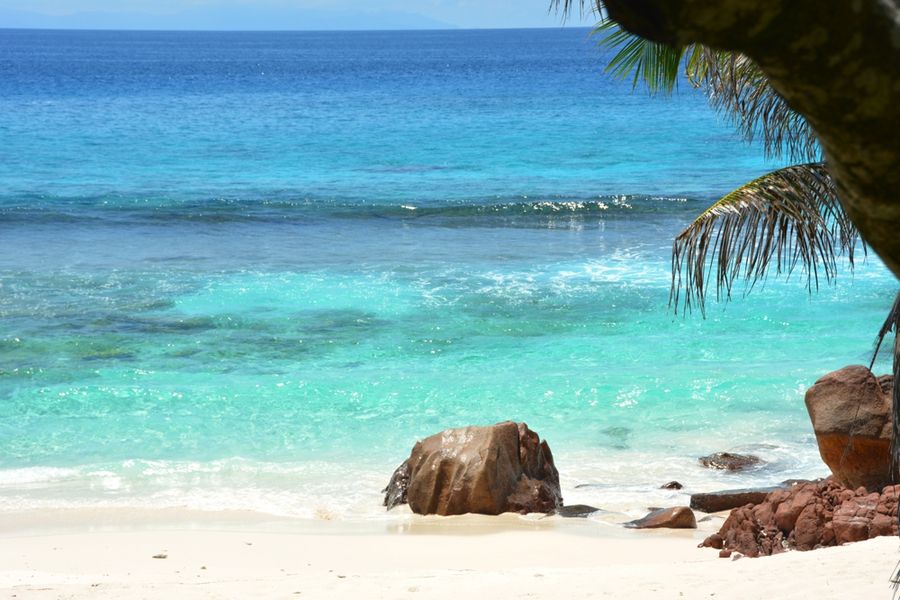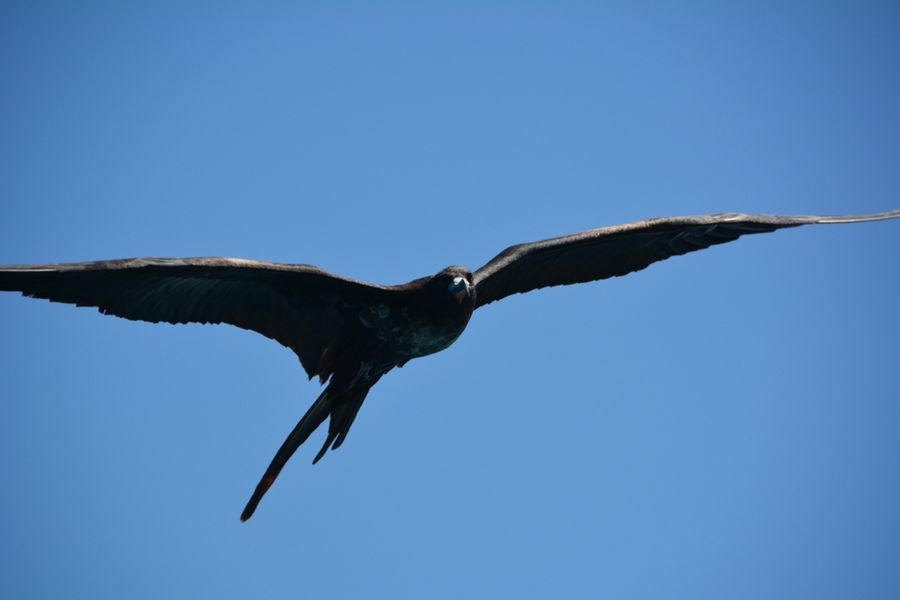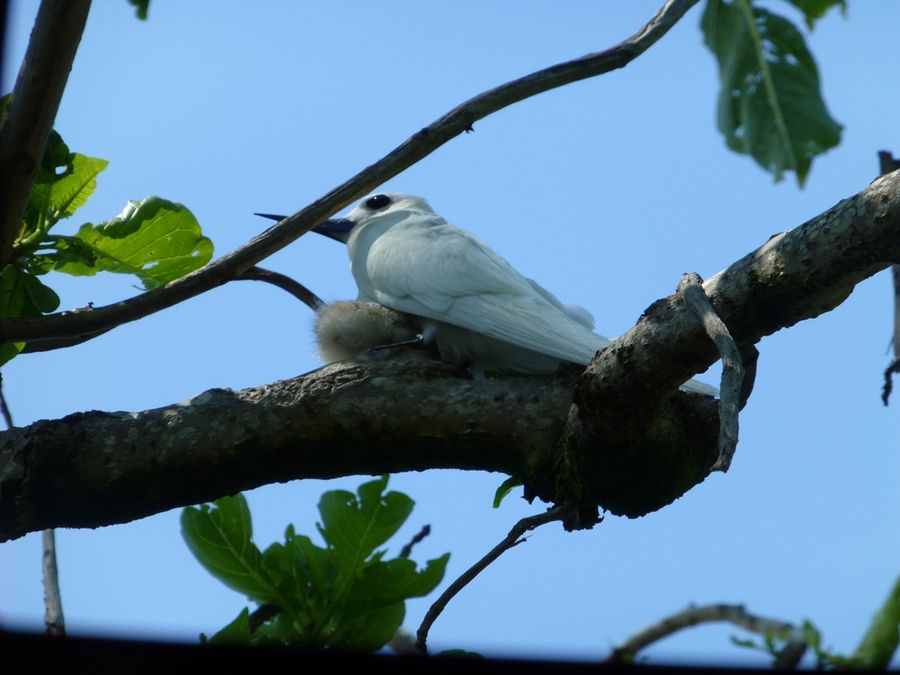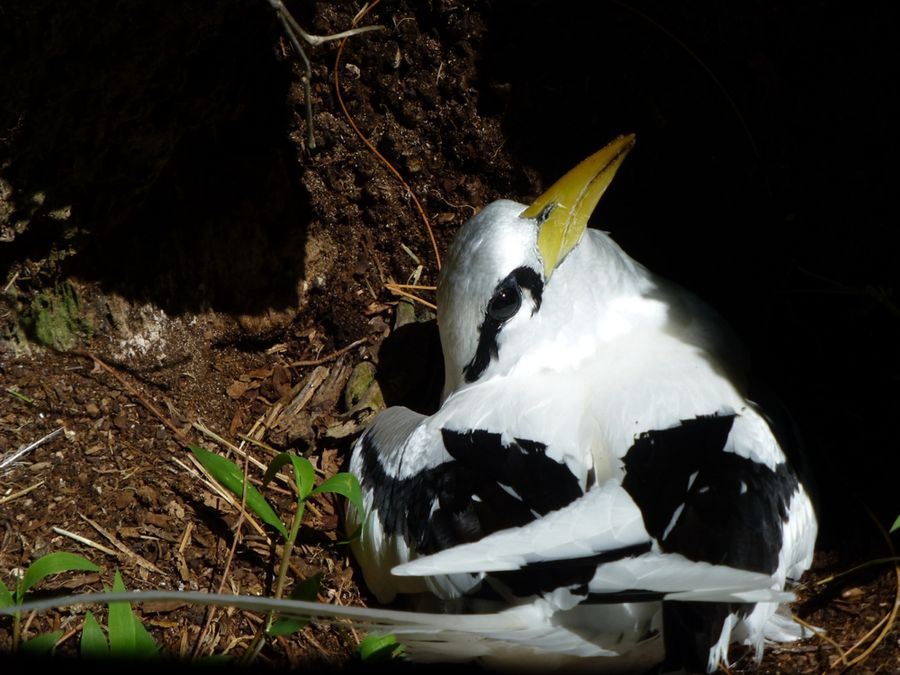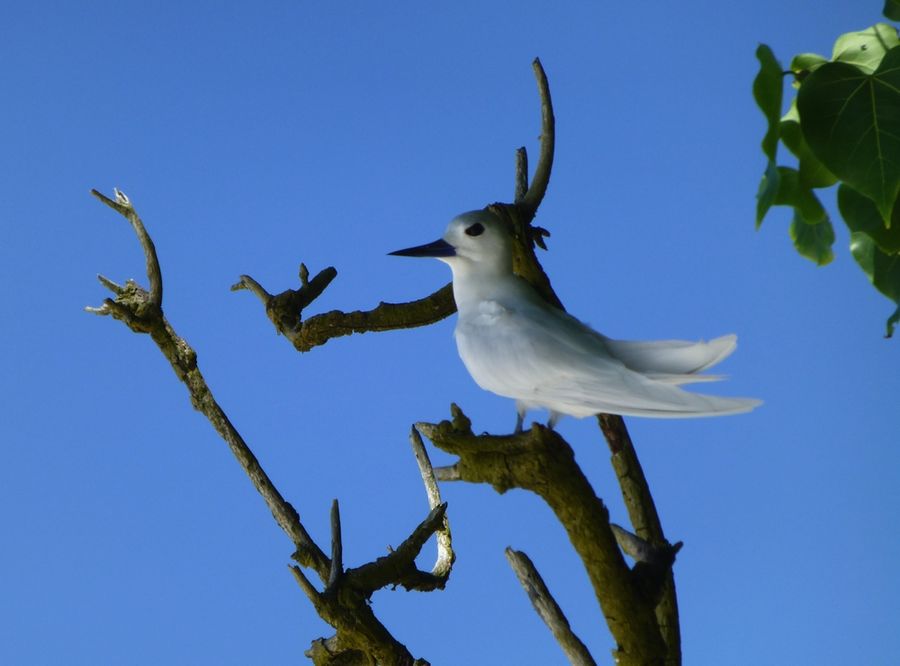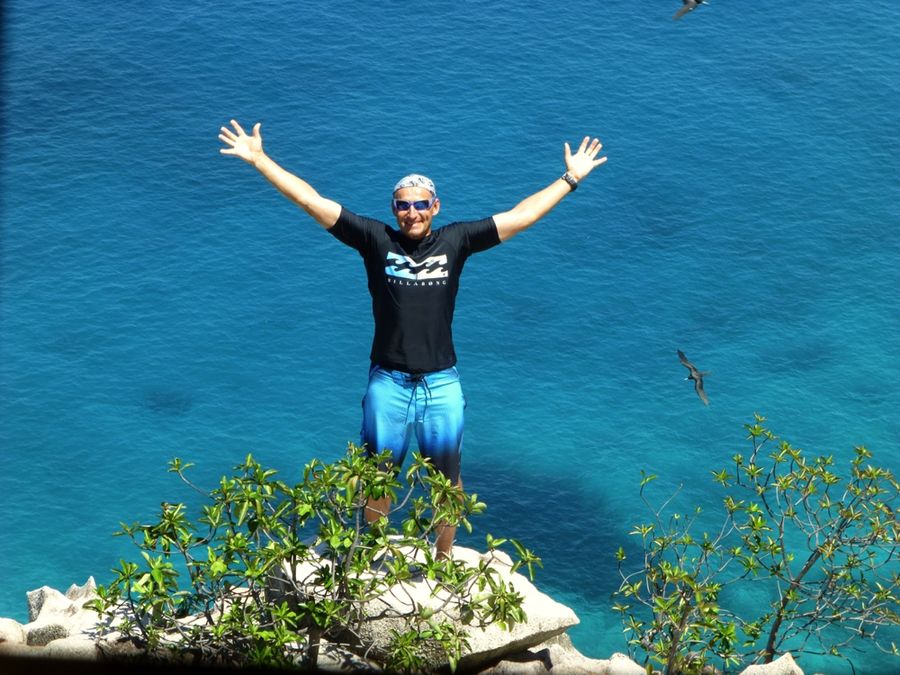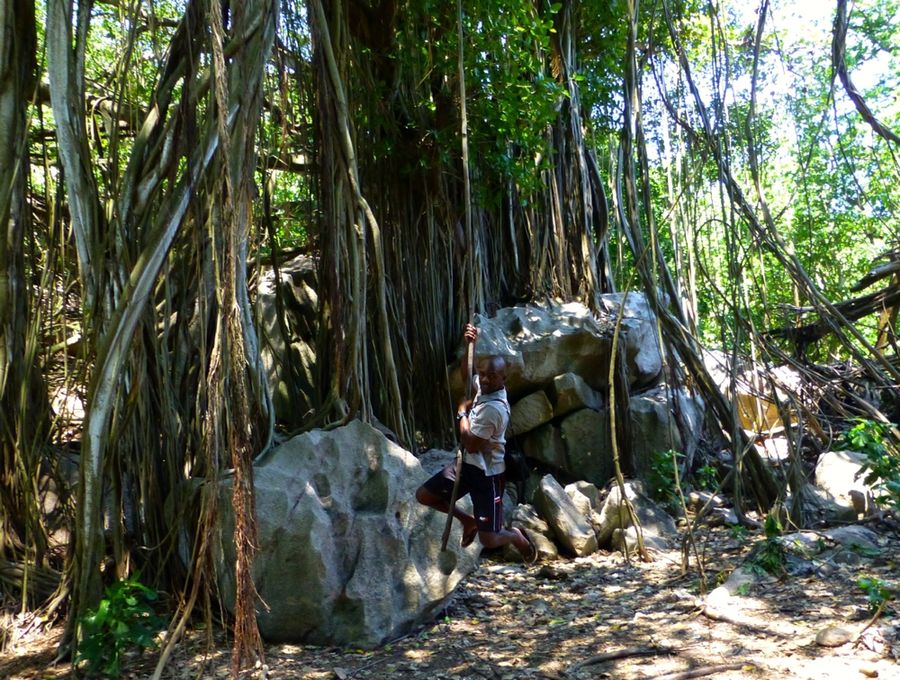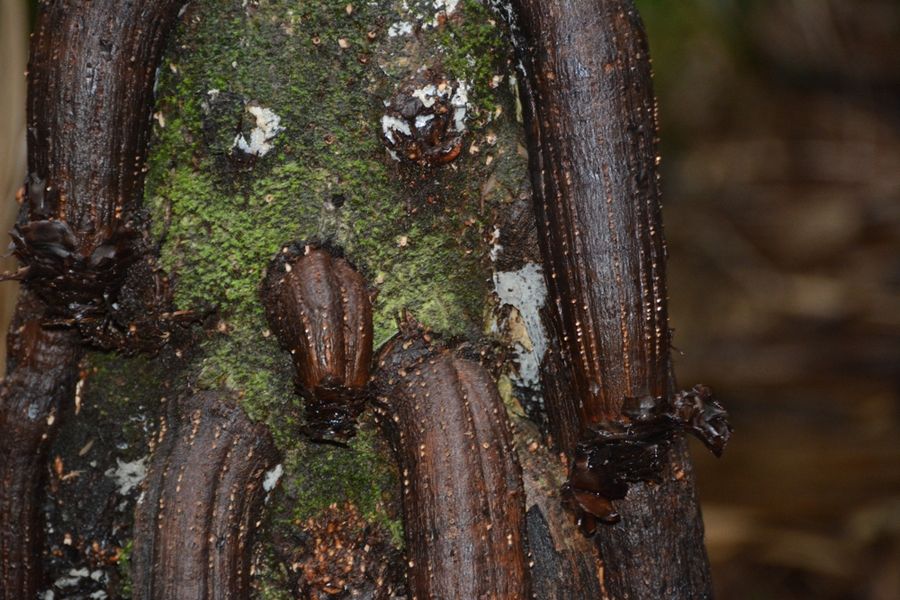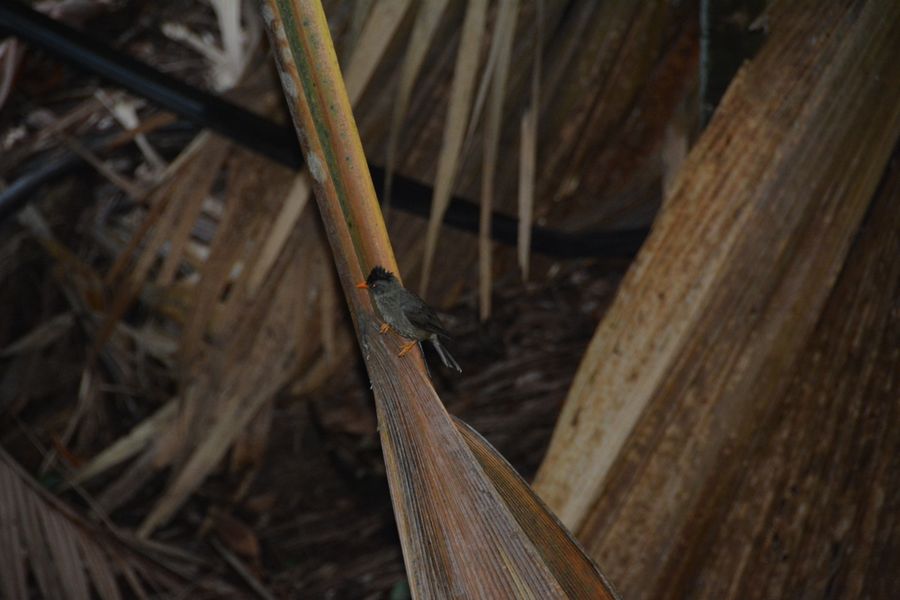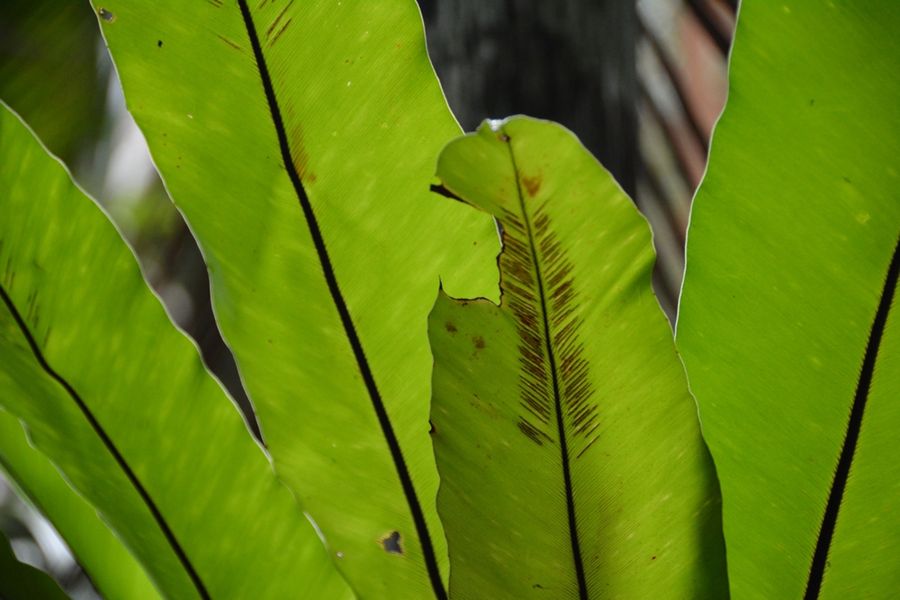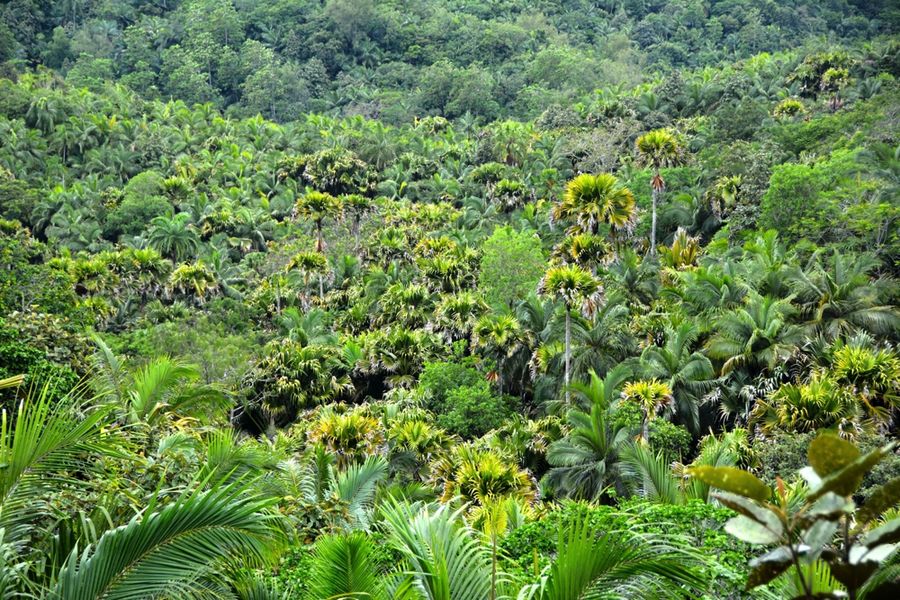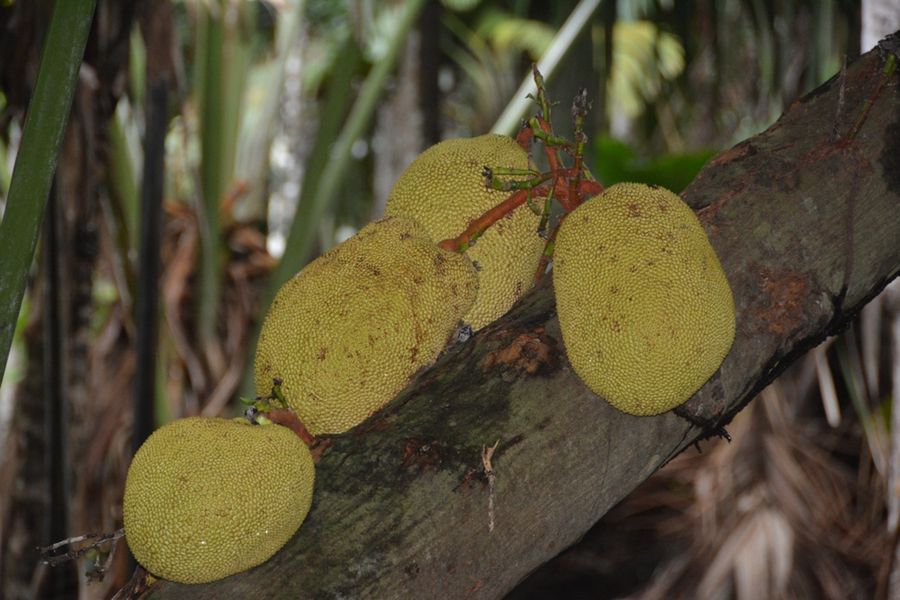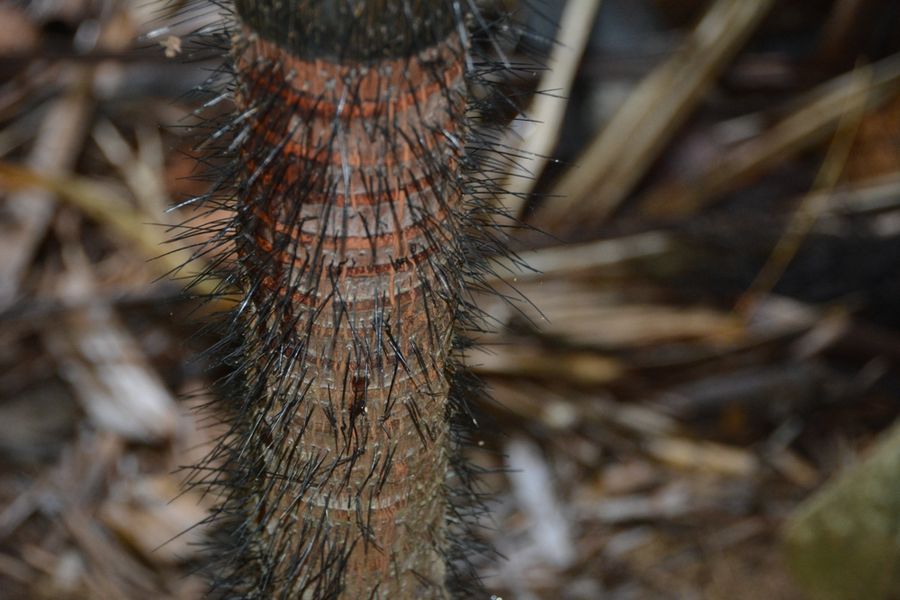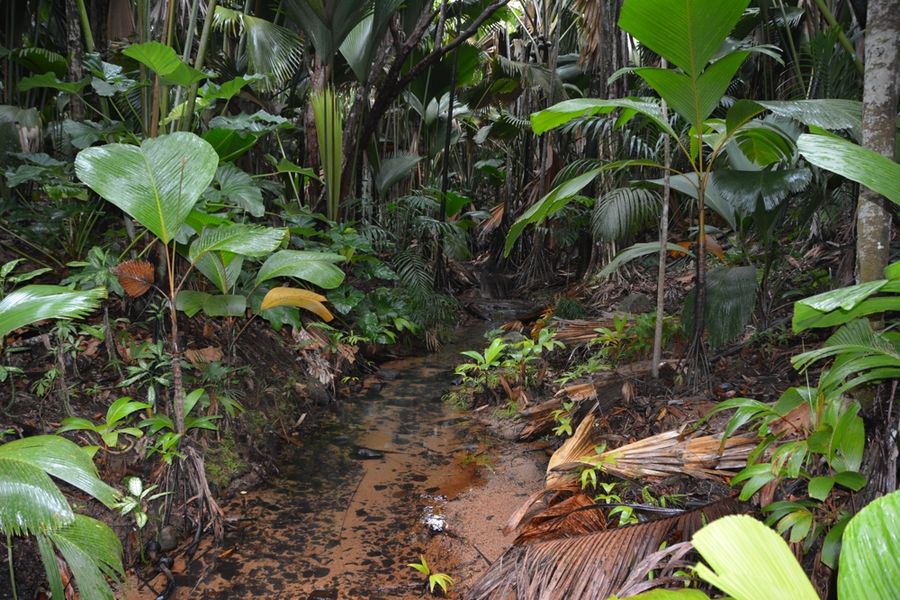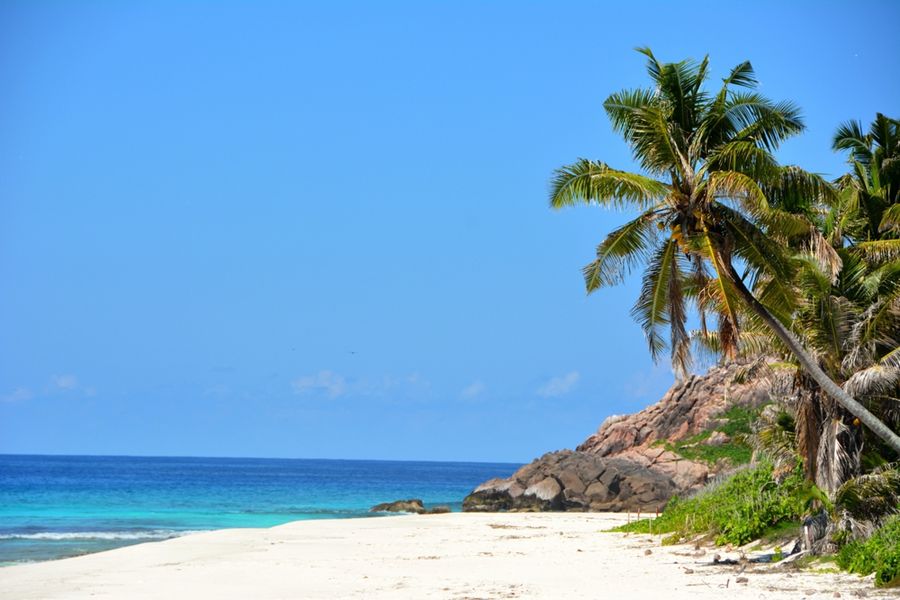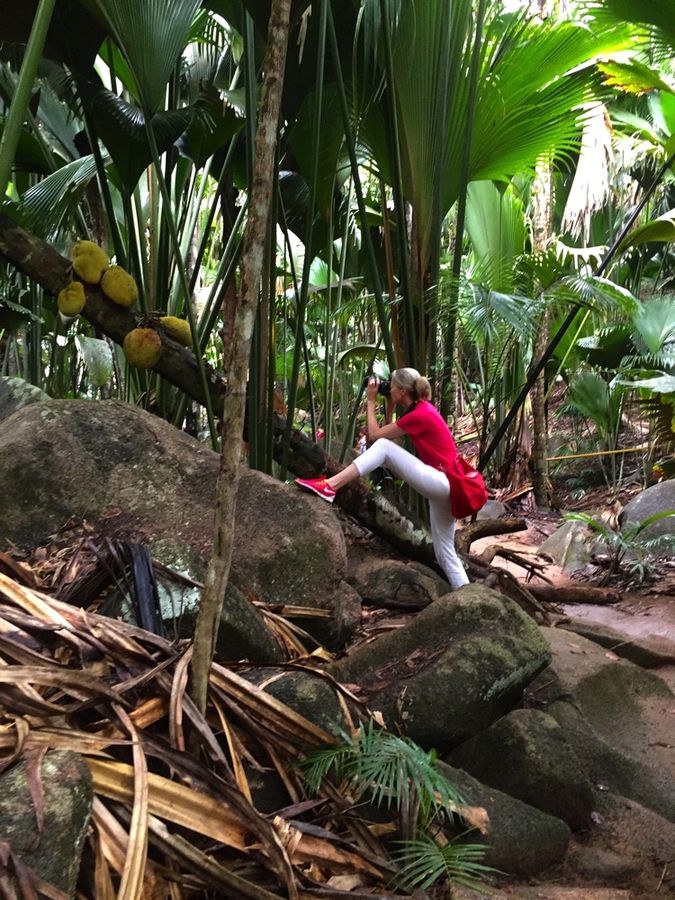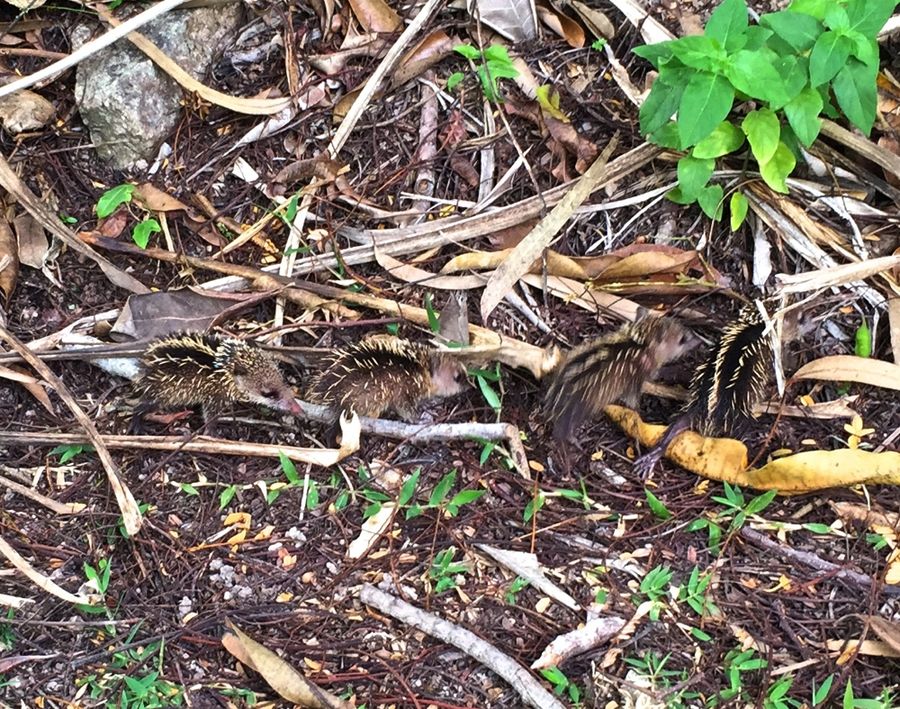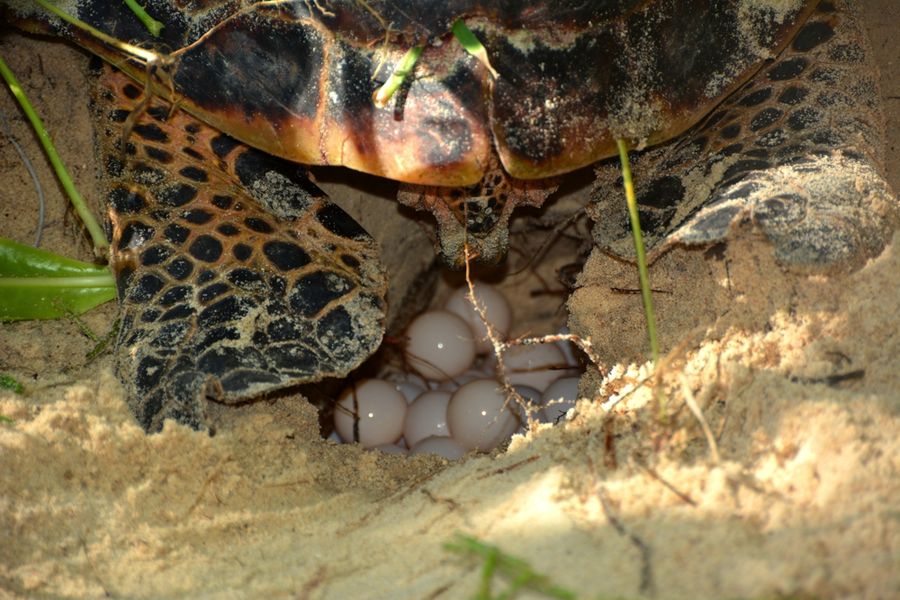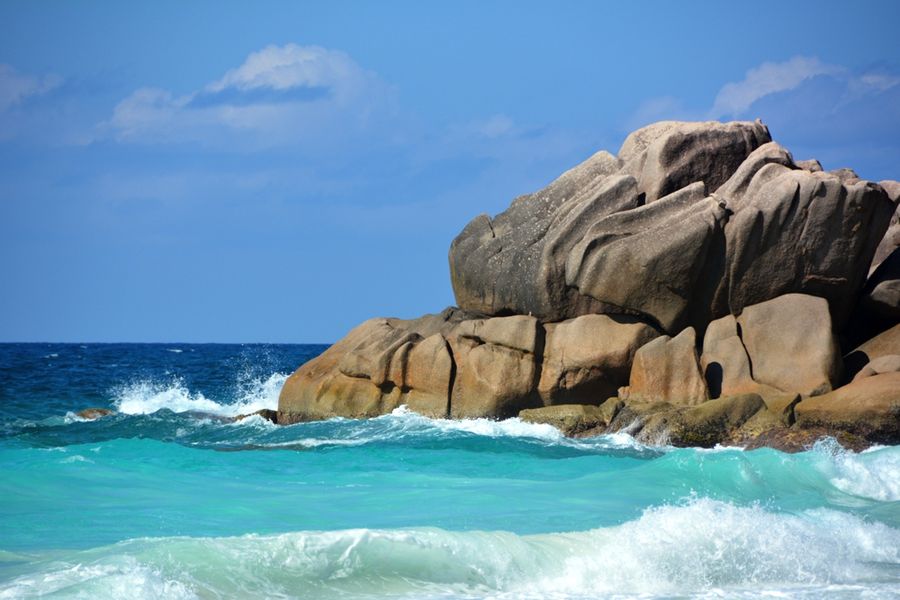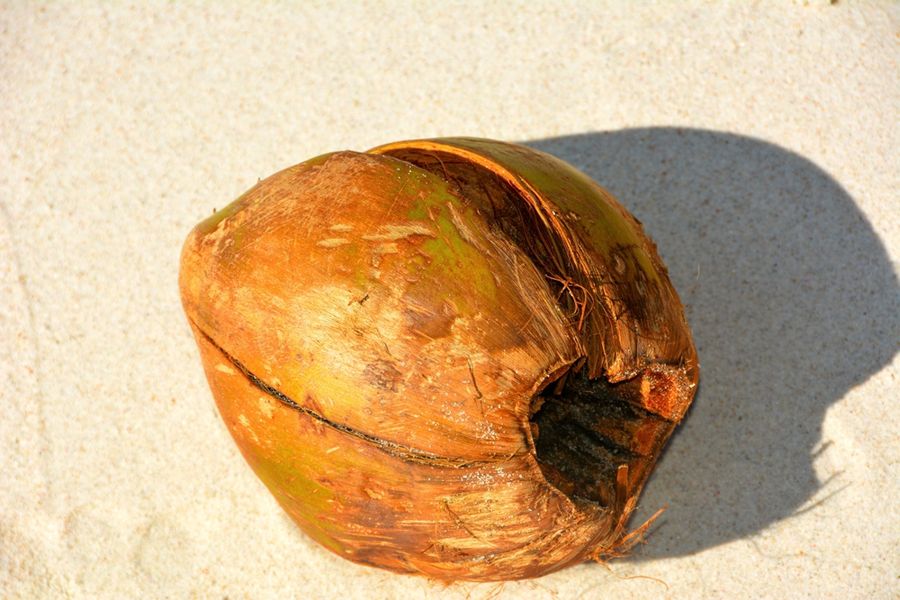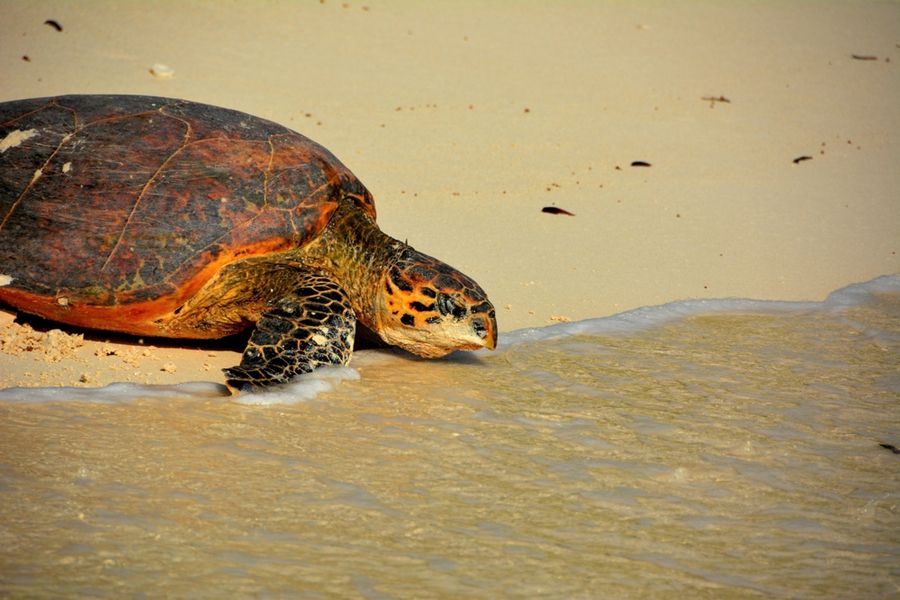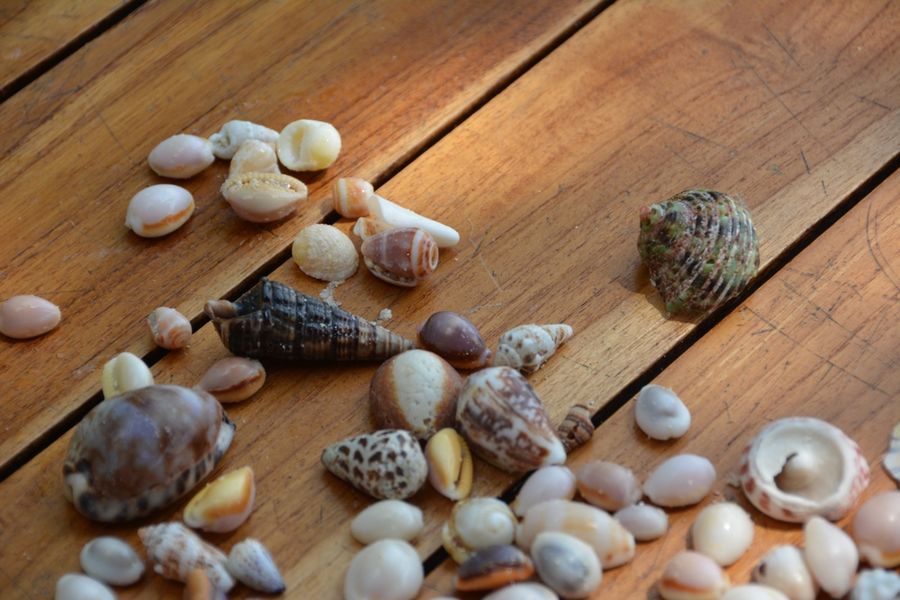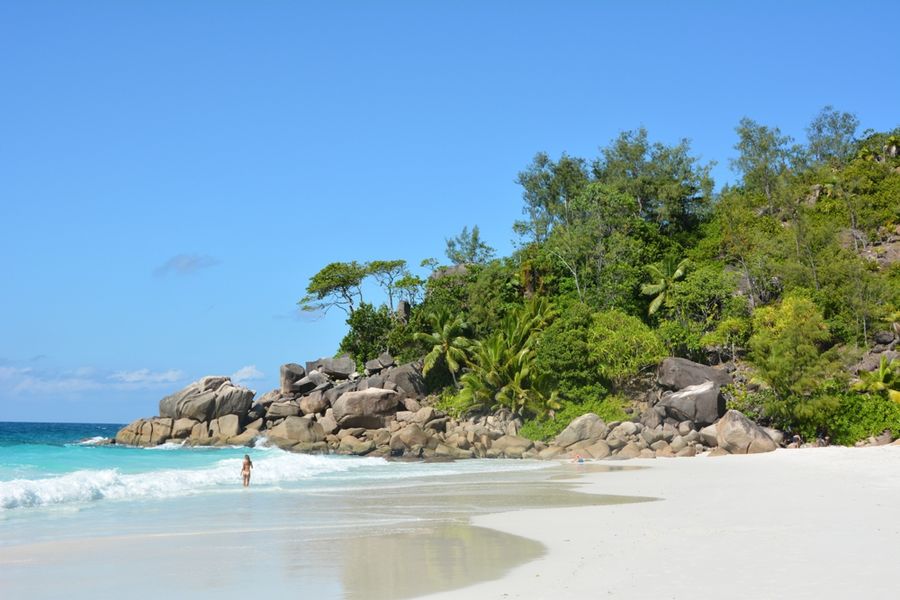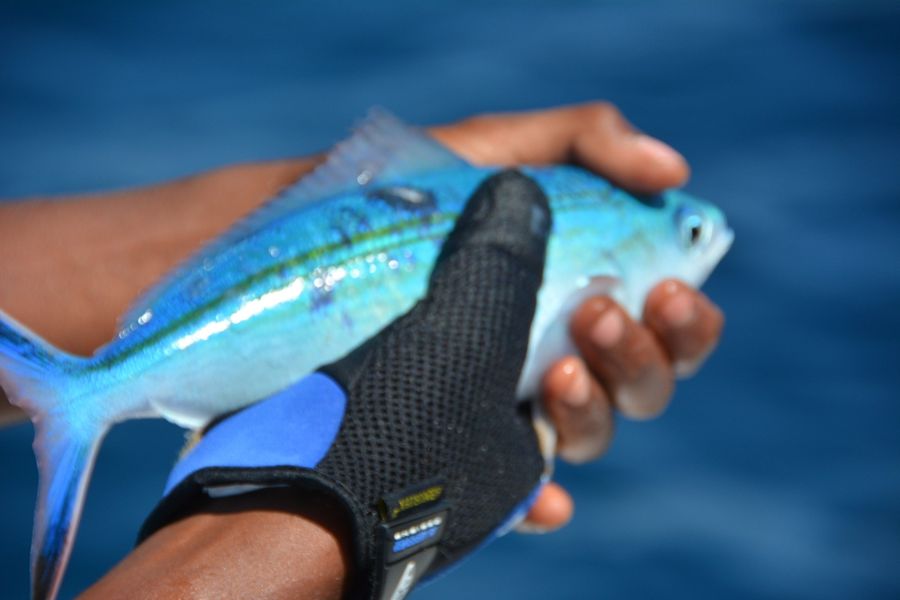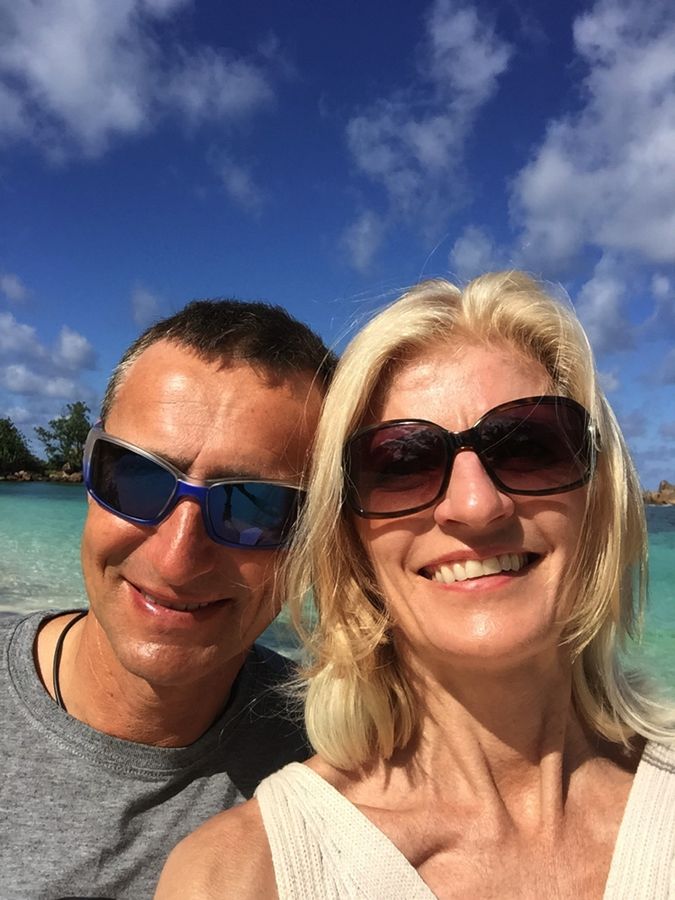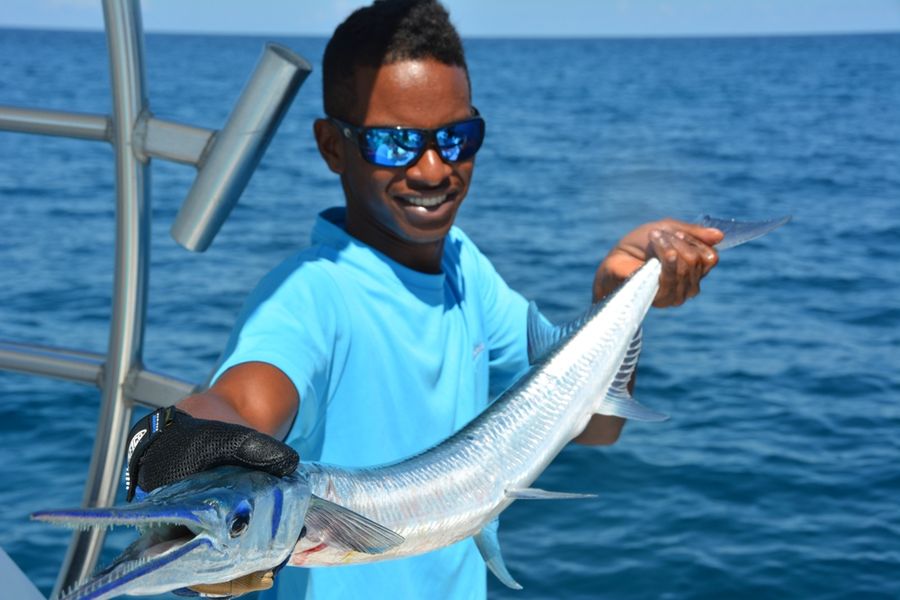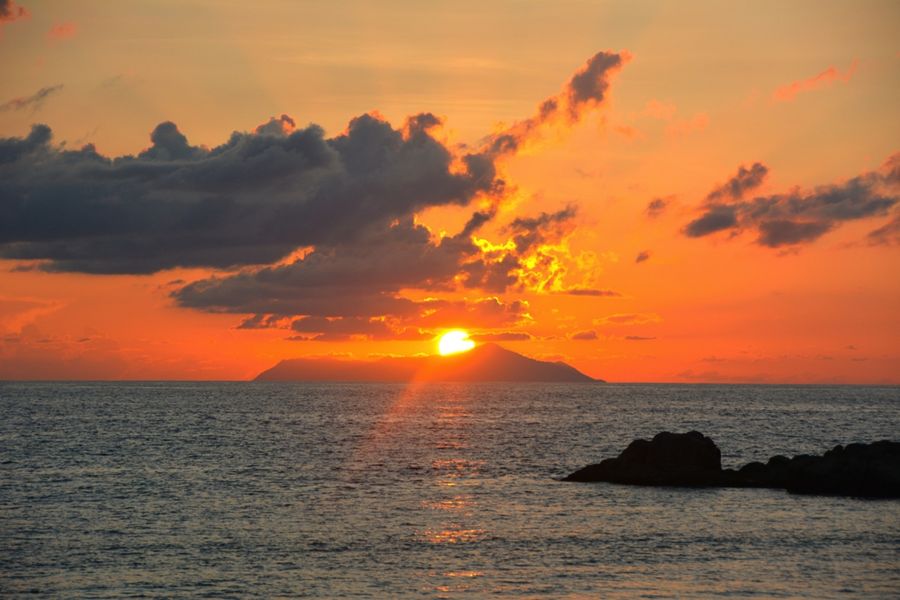Light Tackle, Jigging and Popper Fishing in Paradise
The Seychelles in November 2014
On our way back to Germany from Australia we spent another 10 days on the Seychelles island of Praslin. I still had a couple poppers, stick-baits, jigs and some of our BWF range of trolling lures in my luggage. Unfortunately, as was the case last year, the conditions for popper fishing were not ideal. High water temperatures and at times greenish coloured water meant that of the estimated 5,000 casts over six days we only got a measly six GT bites. We were only able to hook 2 smaller ones while the others escaped in the corals of the shallow waters. We did have some vicious takes from better fish but regrettably we failed to hook them. We always caught fish when jigging. However, the really big fish failed to put in an appearance.
While trolling to the drop off some 30 sea-miles offshore we regularly filled the boat’s fish boxes to the brim with small yellow-fins, skipjacks, dorados, wahoos and bonitos. We fished two baits off the outriggers and set up a teaser rig midships for bait and switch tactics. Using this method we were able to capture 5 sailfish out of a total of 7 bites. We did raise one marlin on of our sailfish lures which unfortunately threw the hook after two jumps.
This trip gave us an opportunity to seriously test our latest lure called “Chuggy”. We caught everything with it from bonitos to sailfish. The absolute highlight turned out to be a 184 lb. yellow-fin tuna (the Seychelles record for 50 lb. tackle). After fighting the fish make or break for 45 minutes we eventually managed to boat the tuna much to our delight. This fish was also caught with our “Chuggy”. Apart from this lure we also fished very successfully with our BWF “Magic Star” and “Magic Candy” light-tackle lures.
All in all it was a superbly restful holiday in extremely beautiful surroundings and unspoilt nature. We spent one day on the Island of Aride (a bird sanctuary). At the height of the season up to one and a half million seafowl come here to brood. These birds are not at all frightened of humans and we can strongly recommend a visit.
We were also fortunate enough to witness a turtle crawling out of the sea, digging a nest in the sand, laying its eggs and then returning to the sea having completed its work. The rate of survival after the juvenile turtles have hatched is a mere one percent, so only 10 turtles in a thousand reach maturity.
Stephan Kreupl, December 2014
